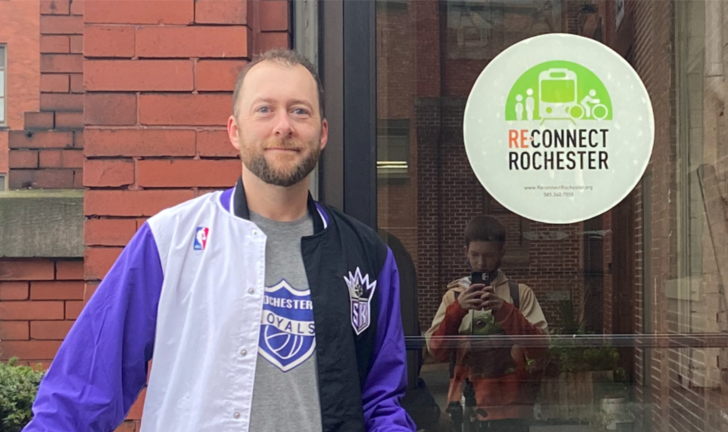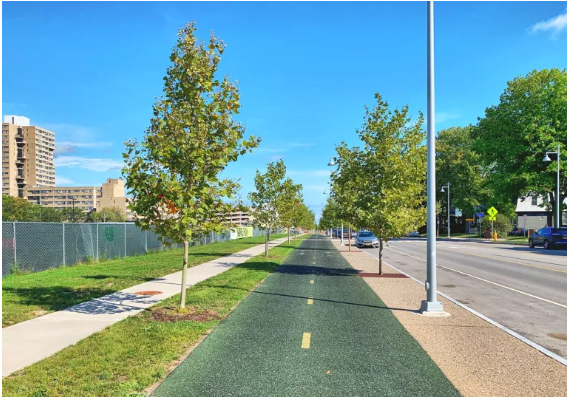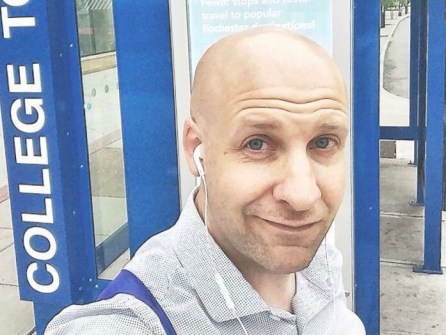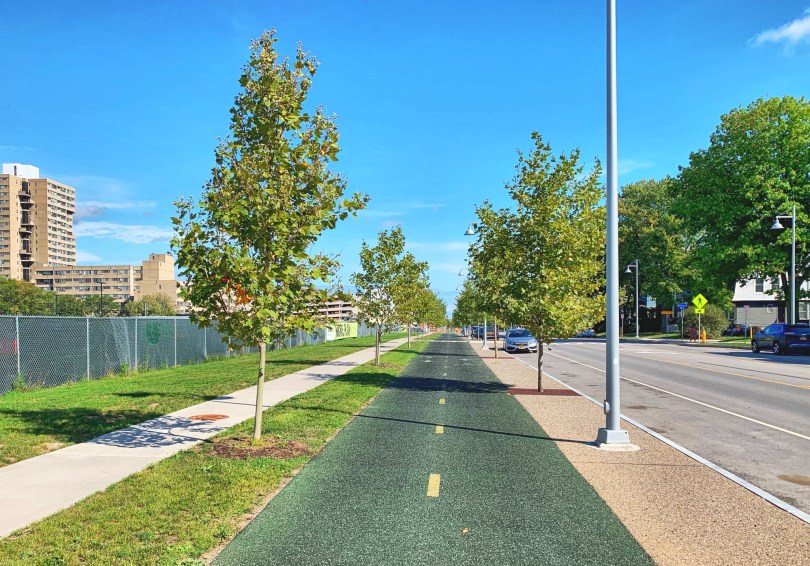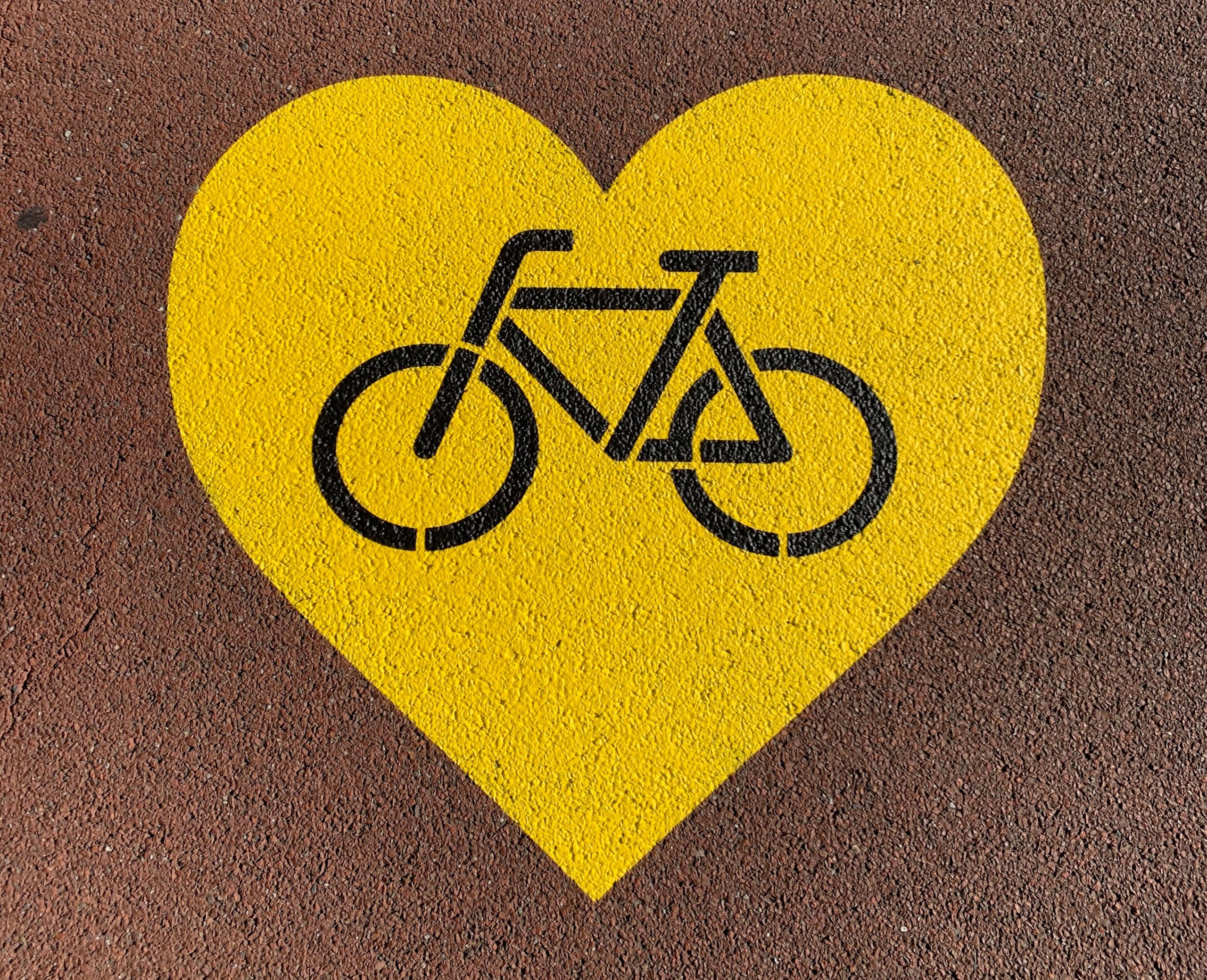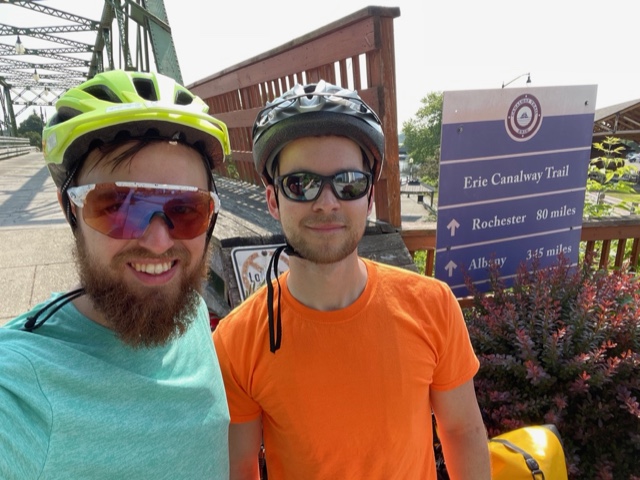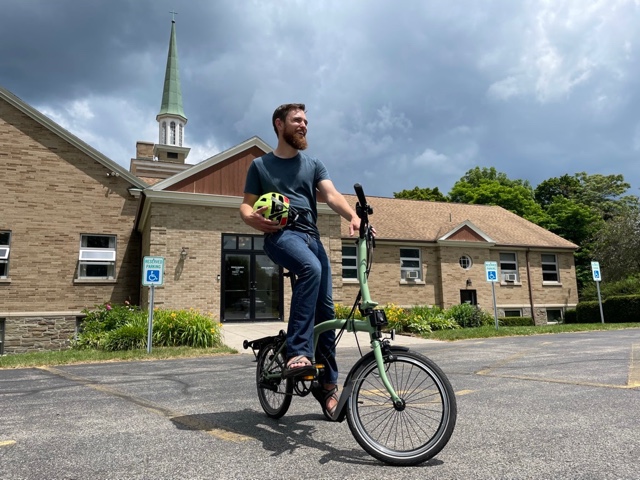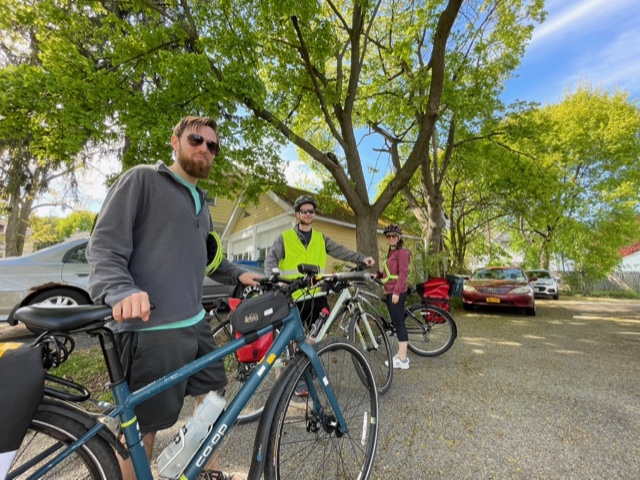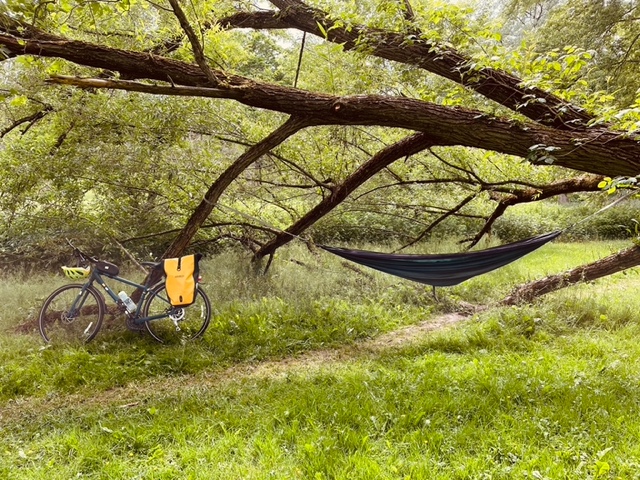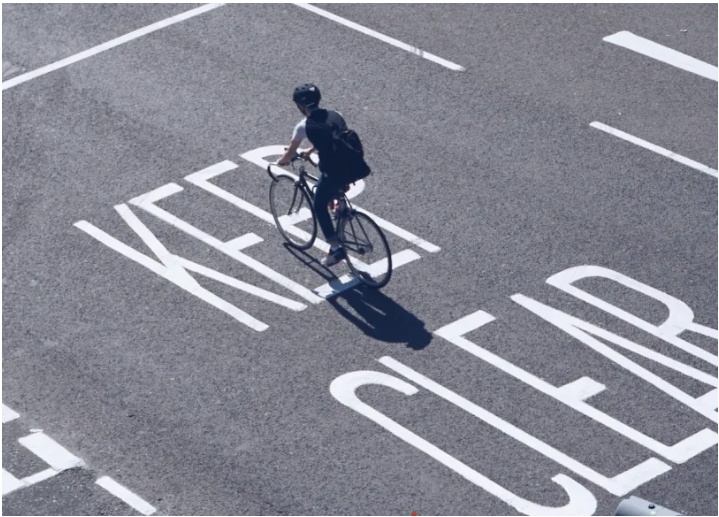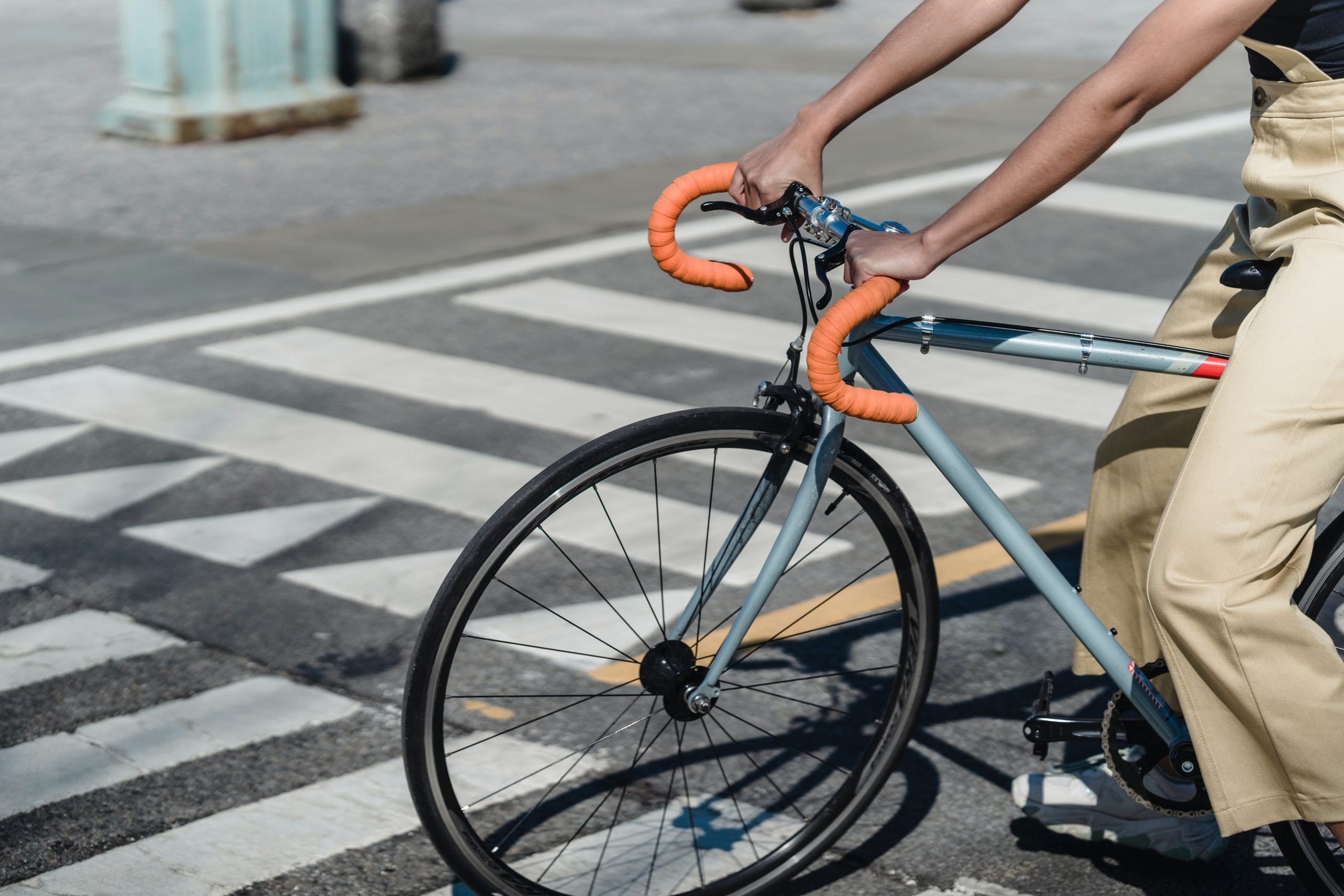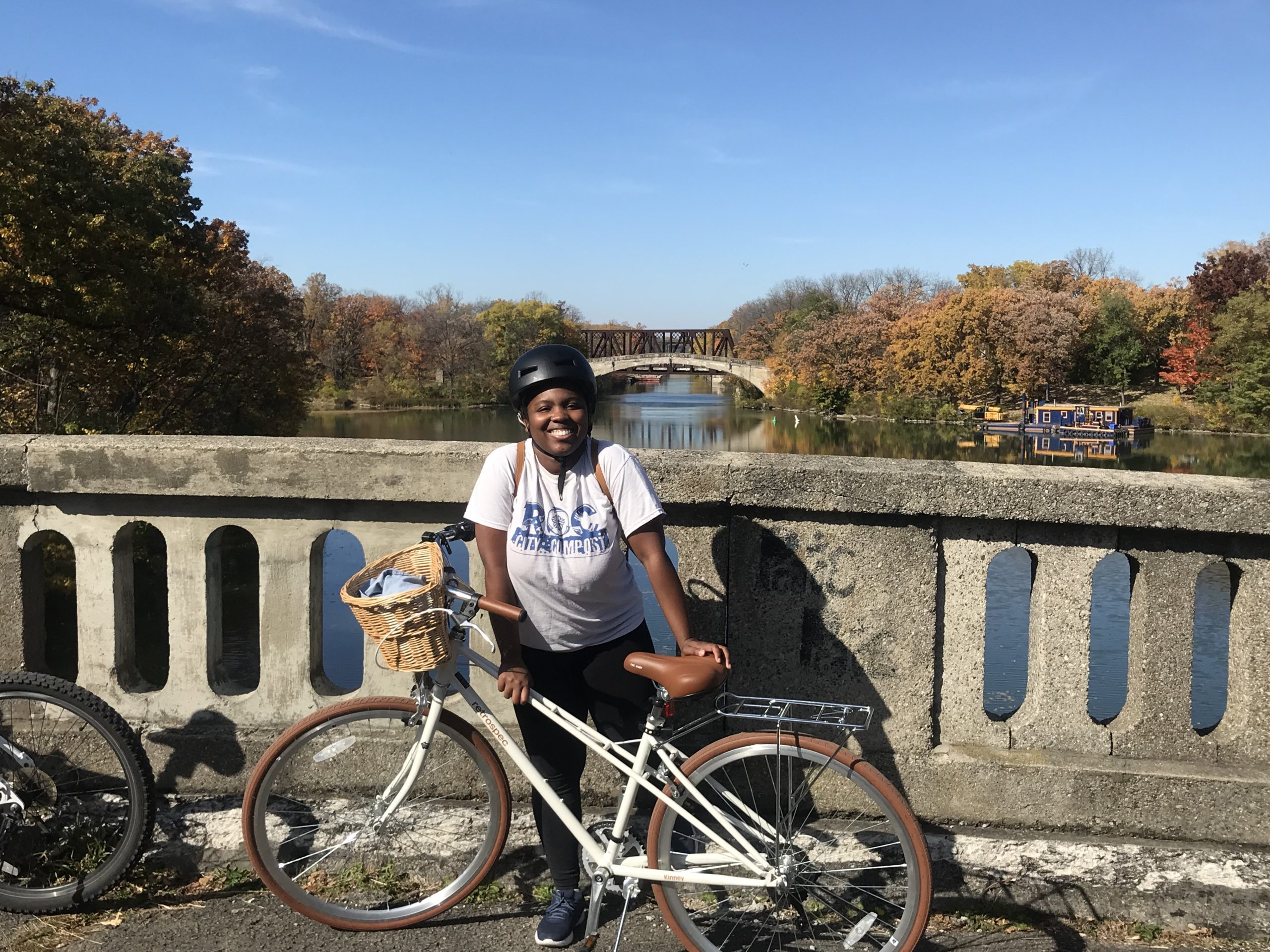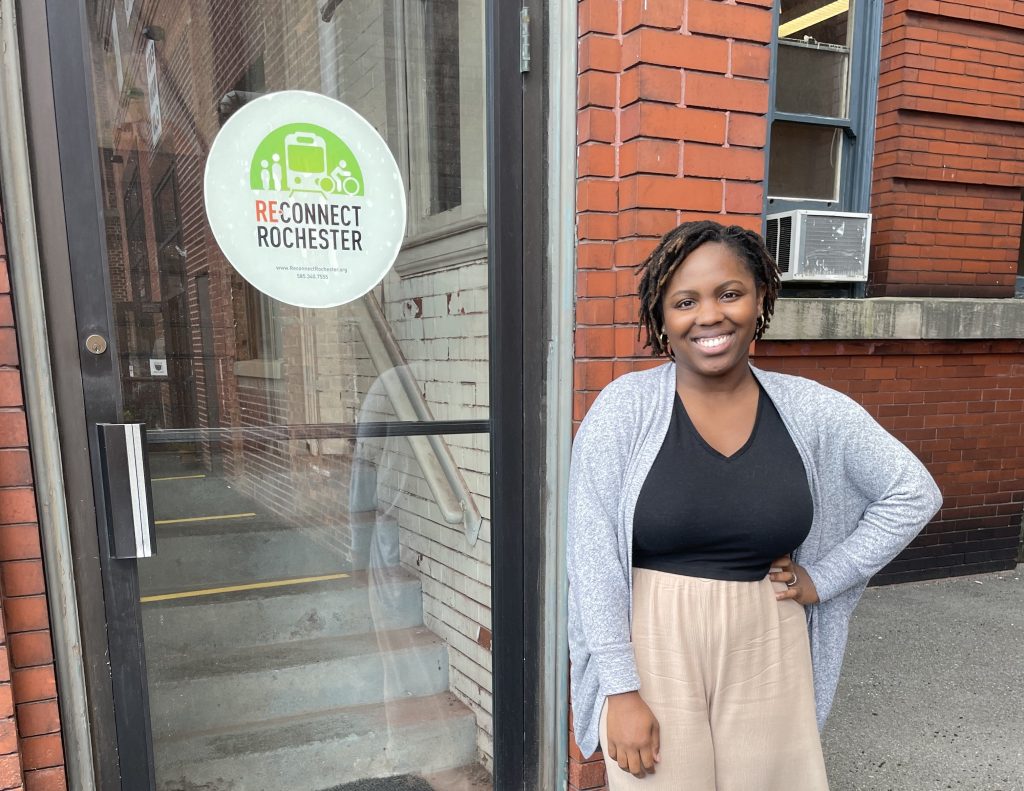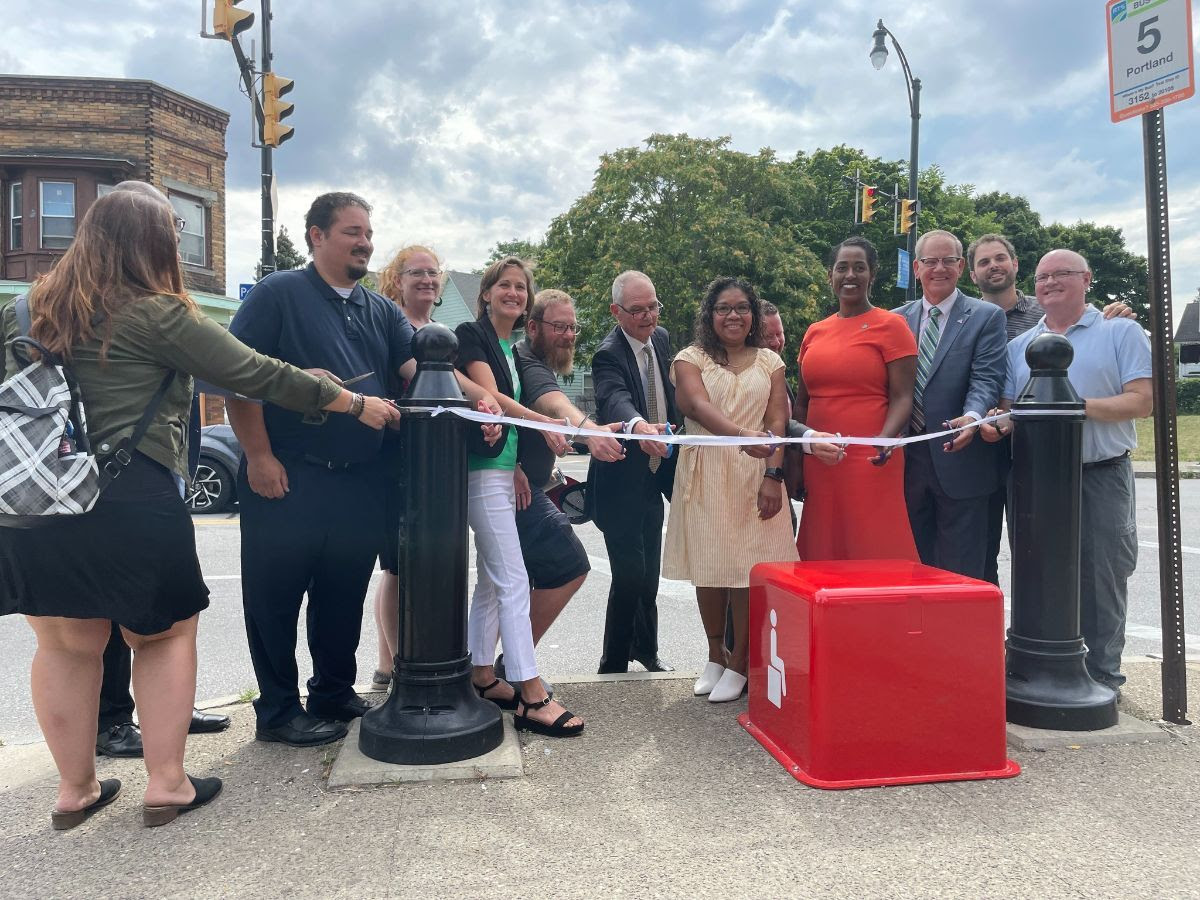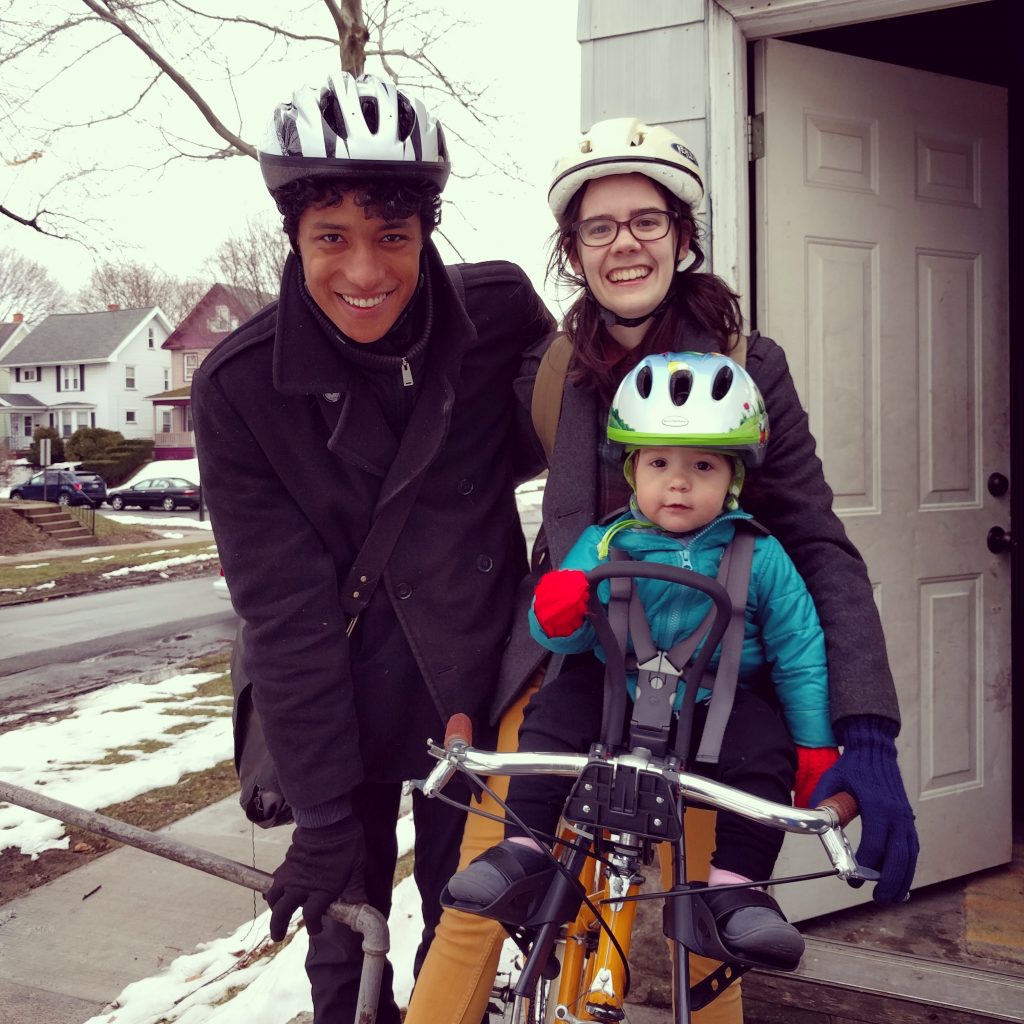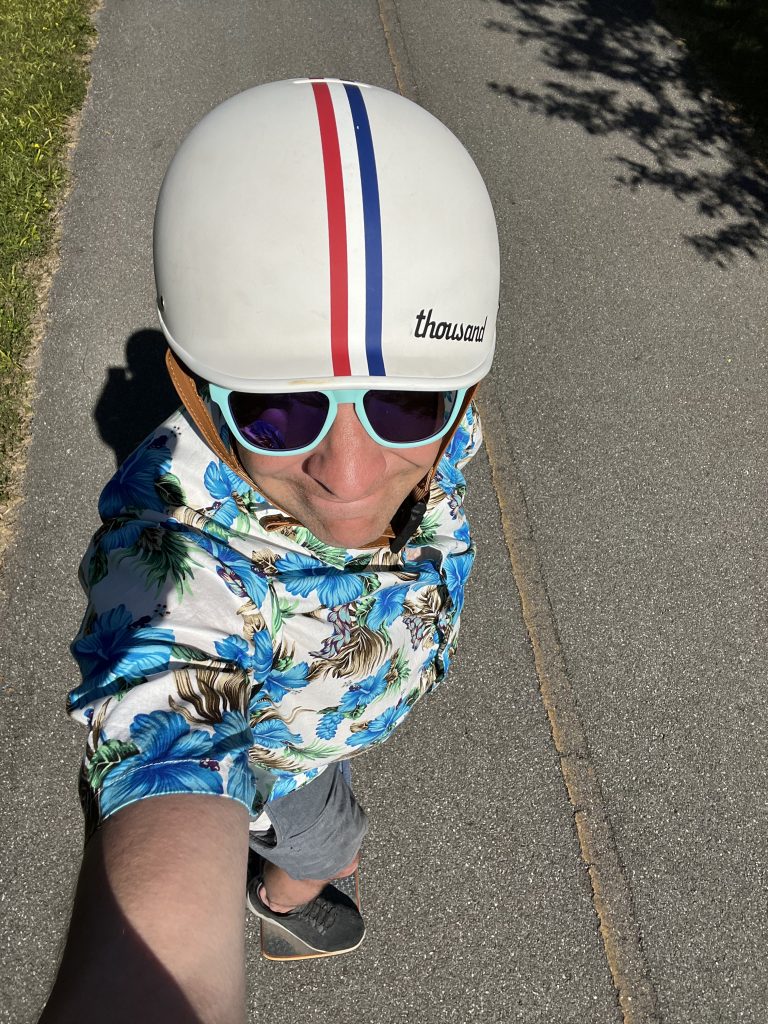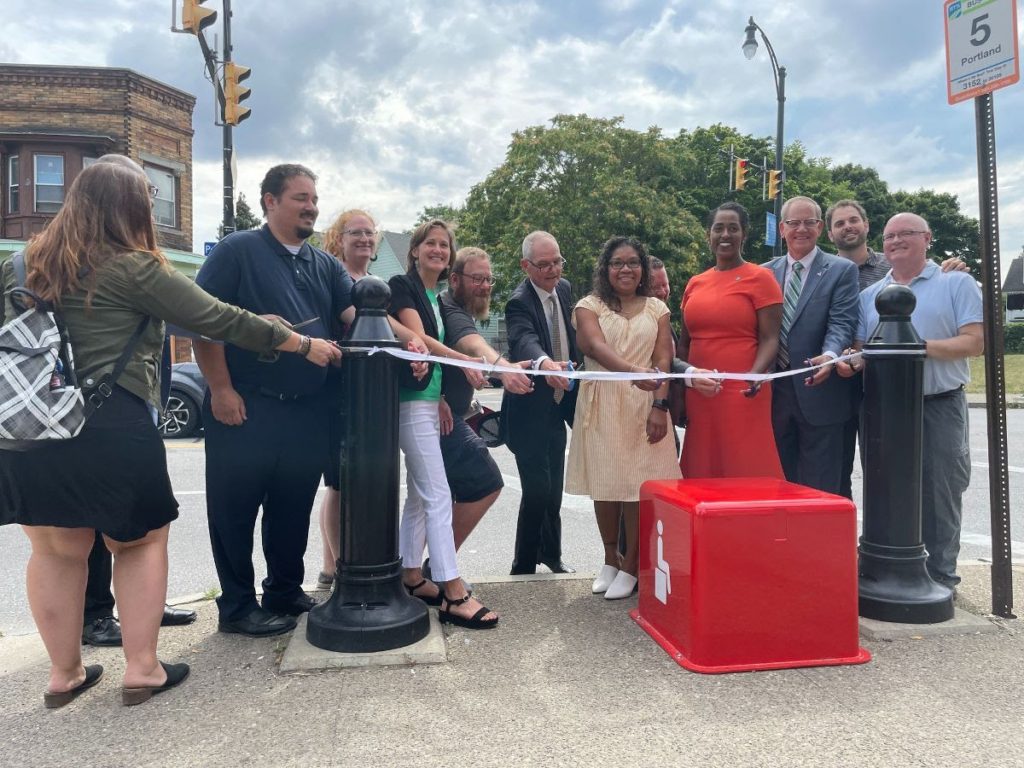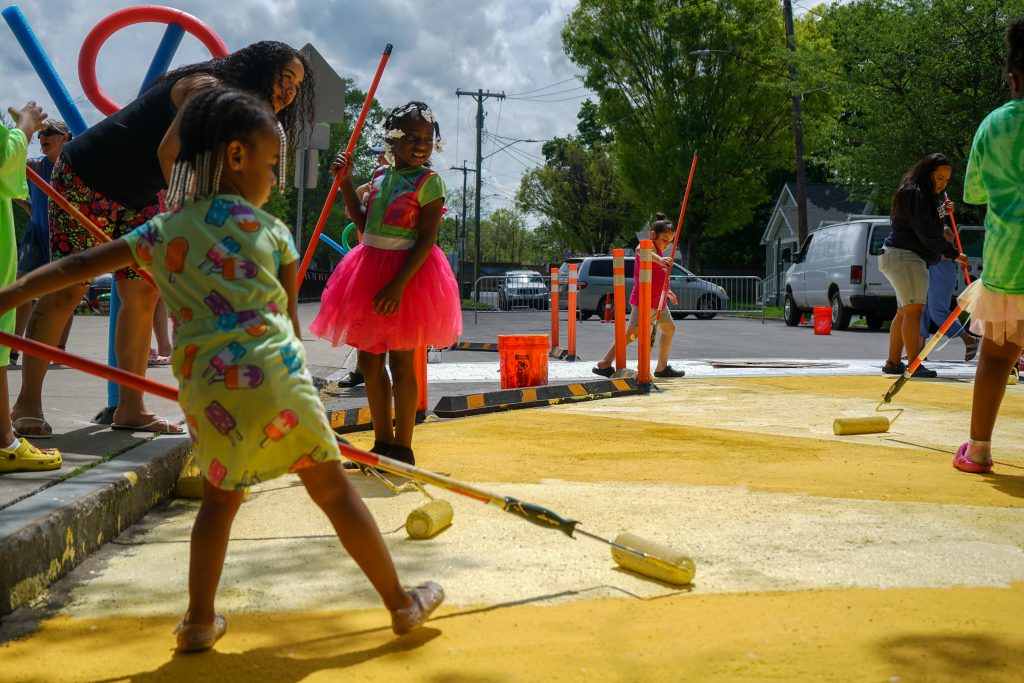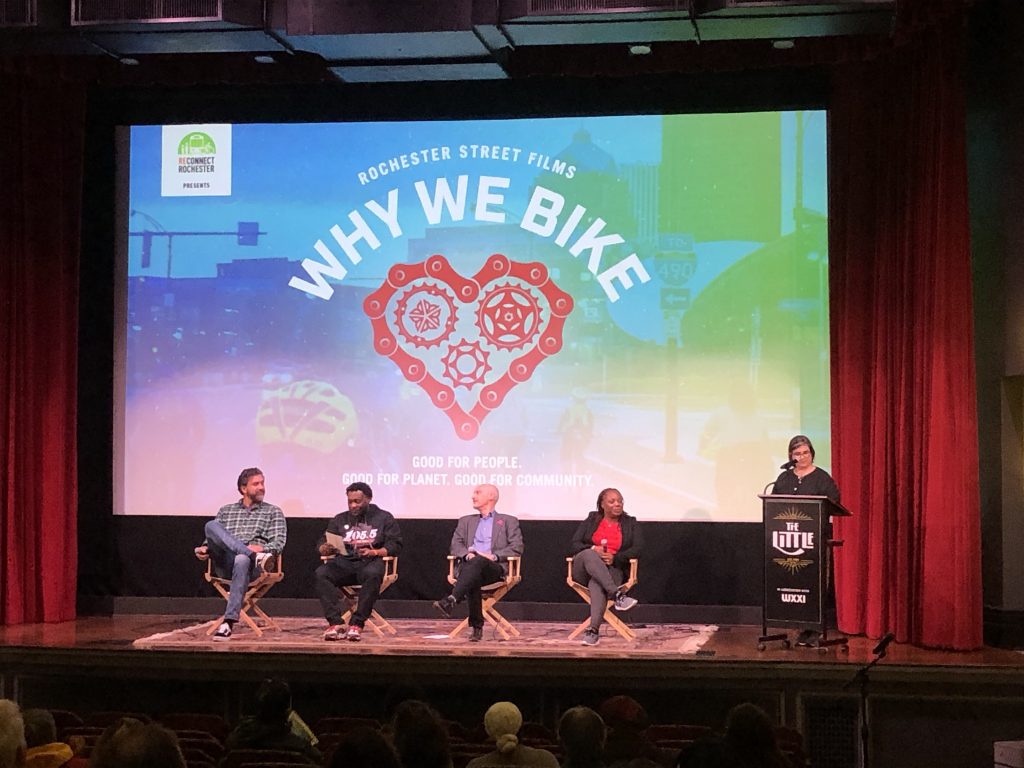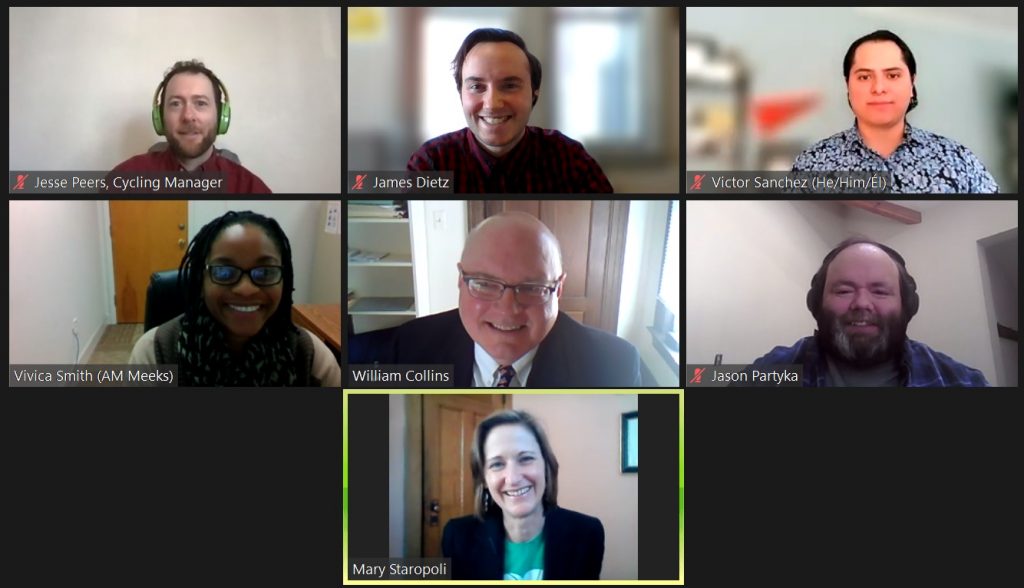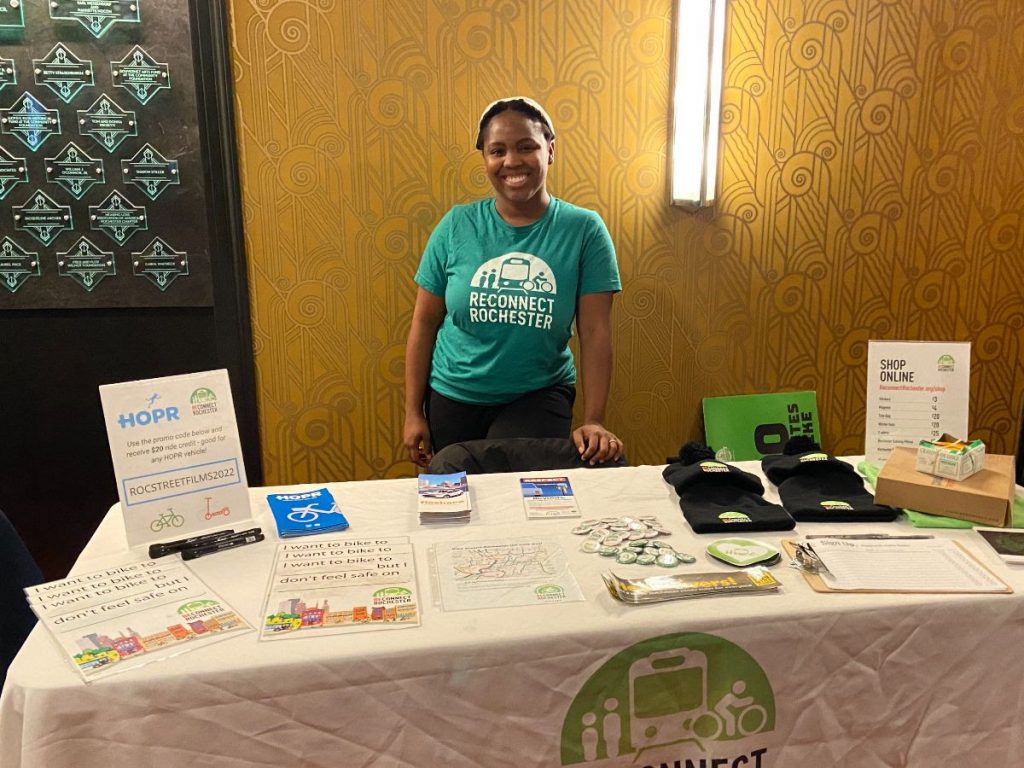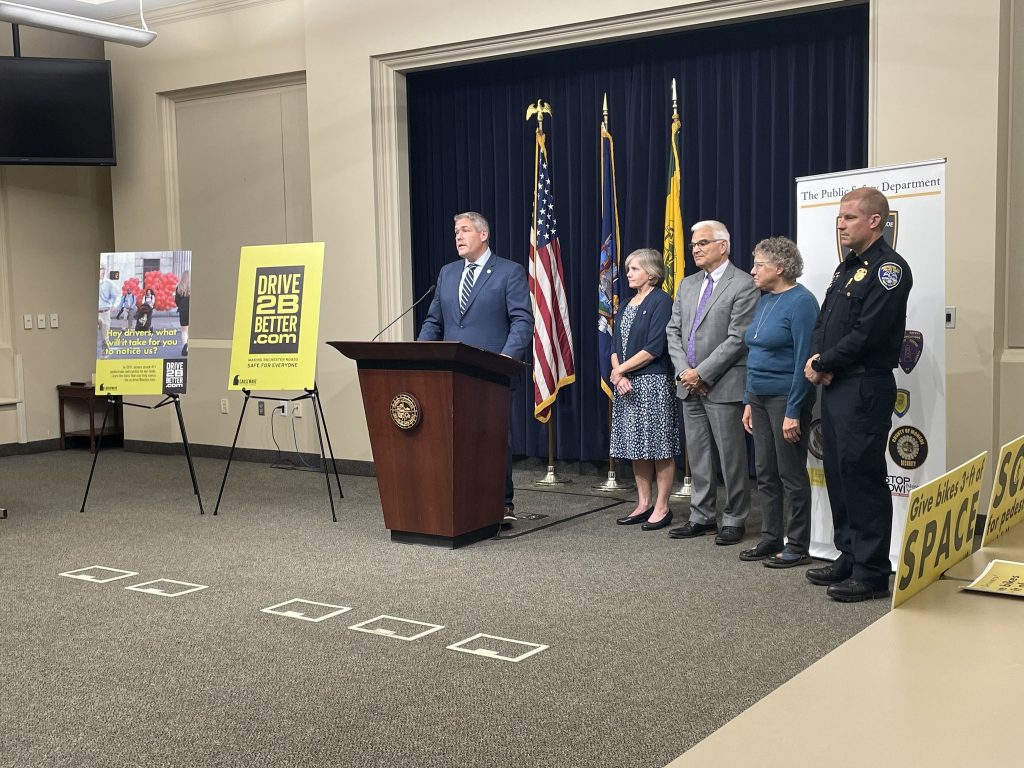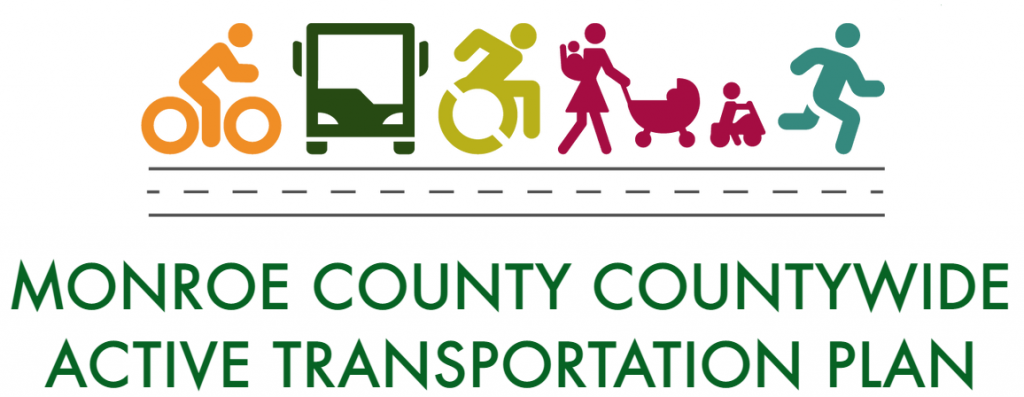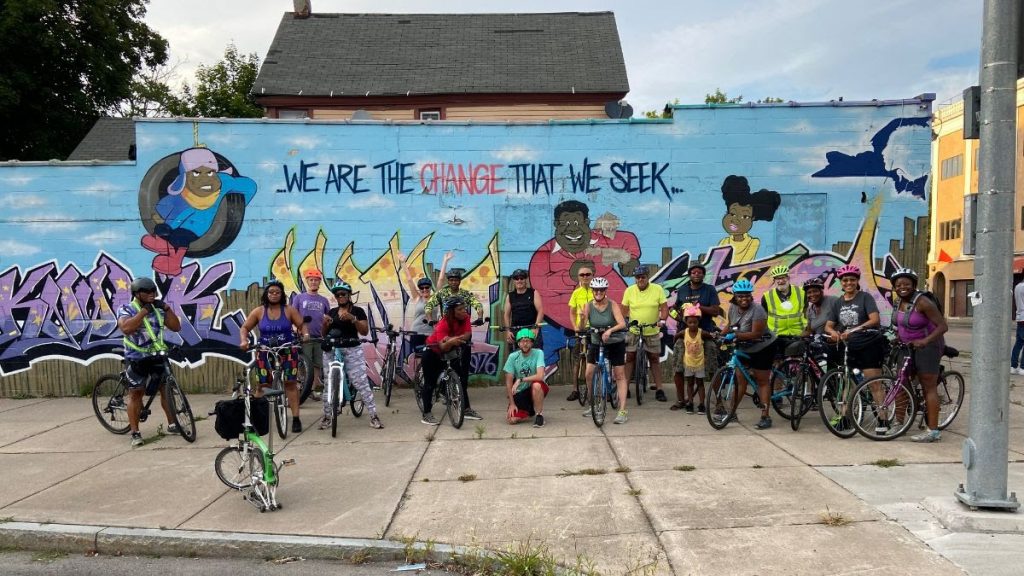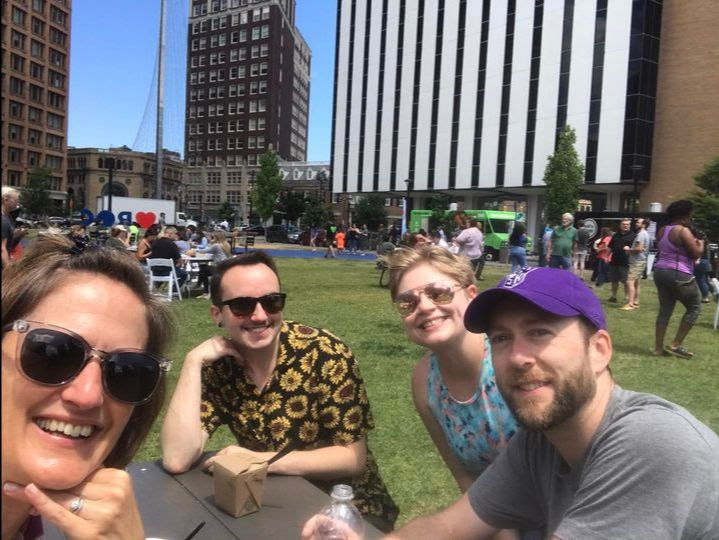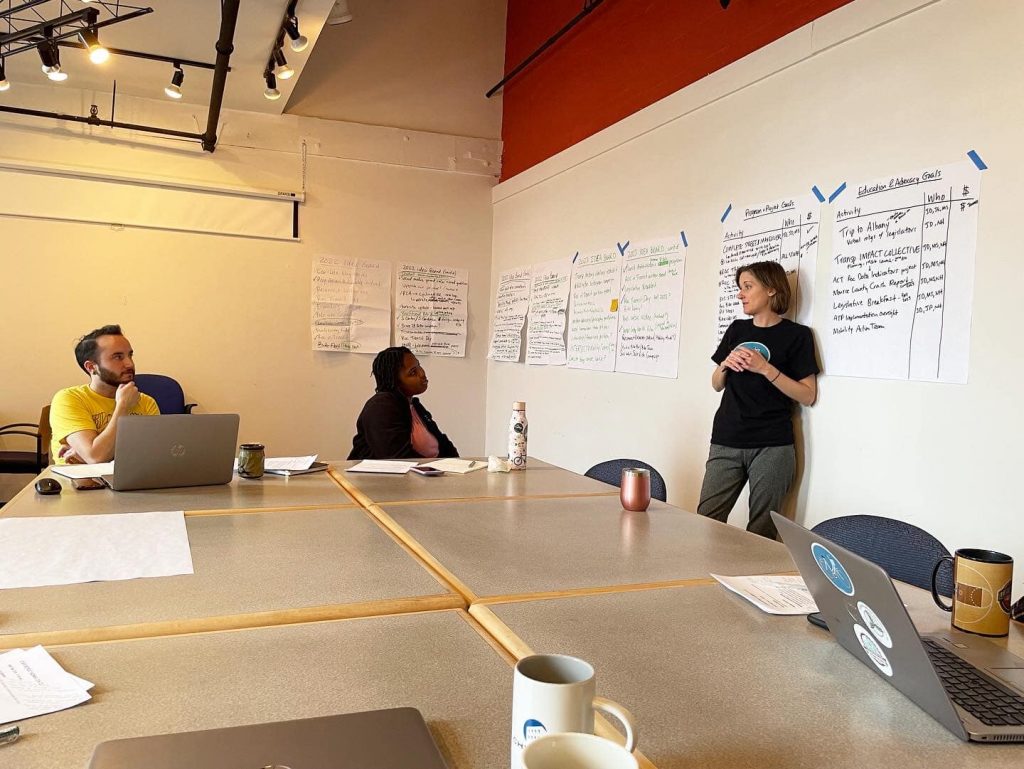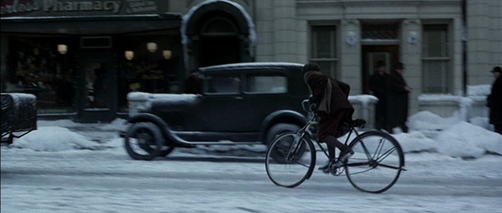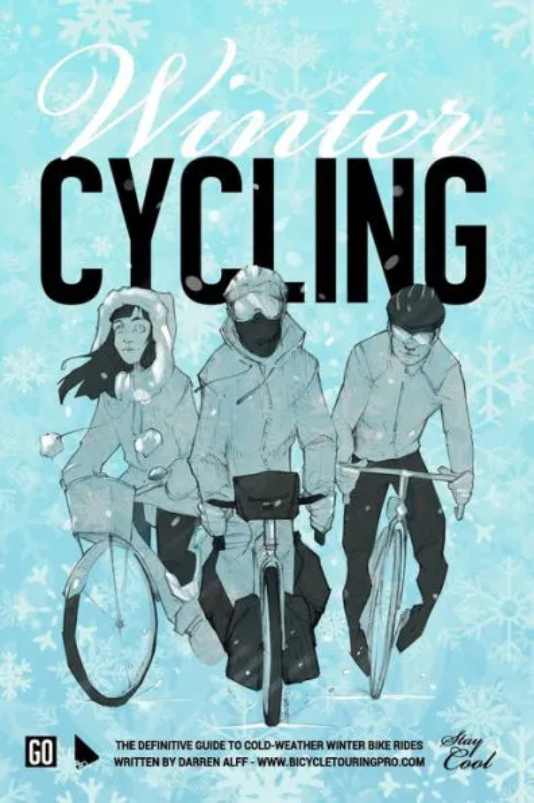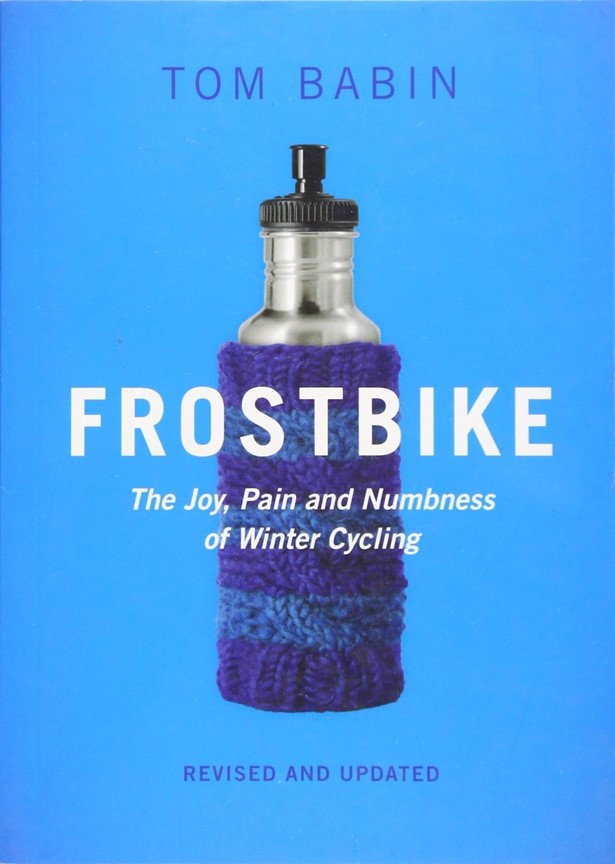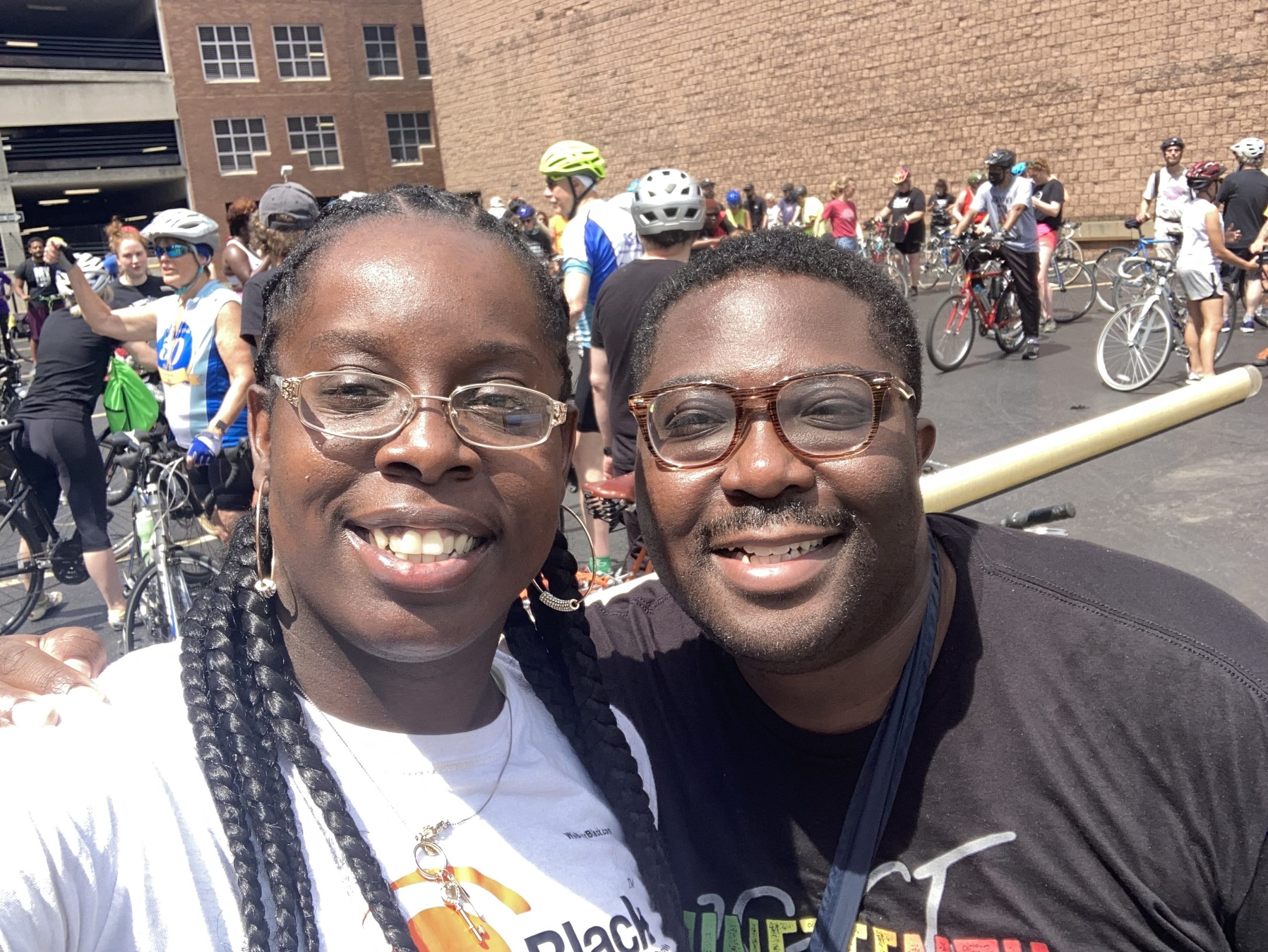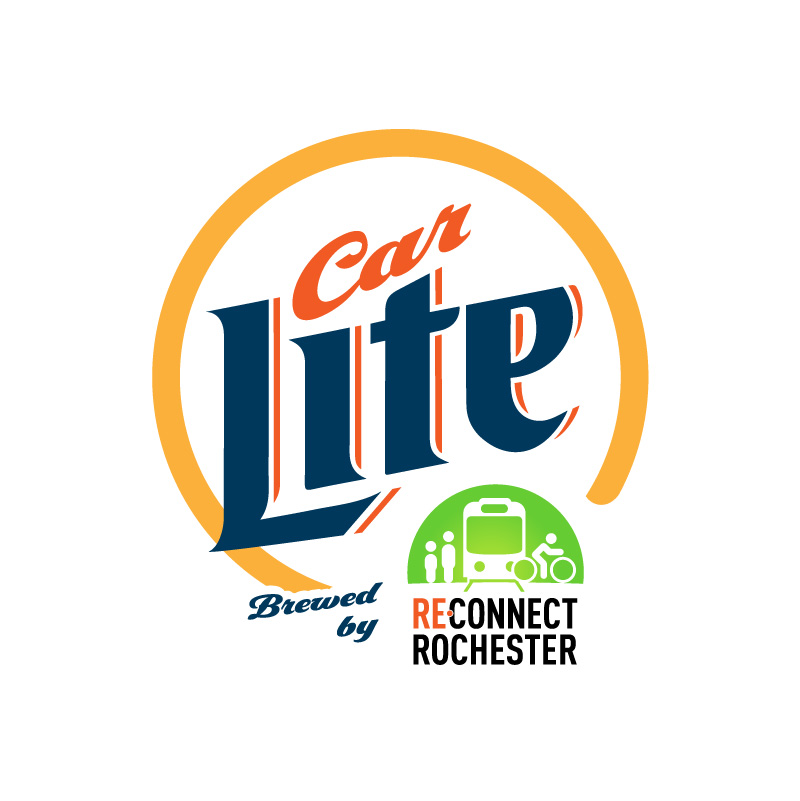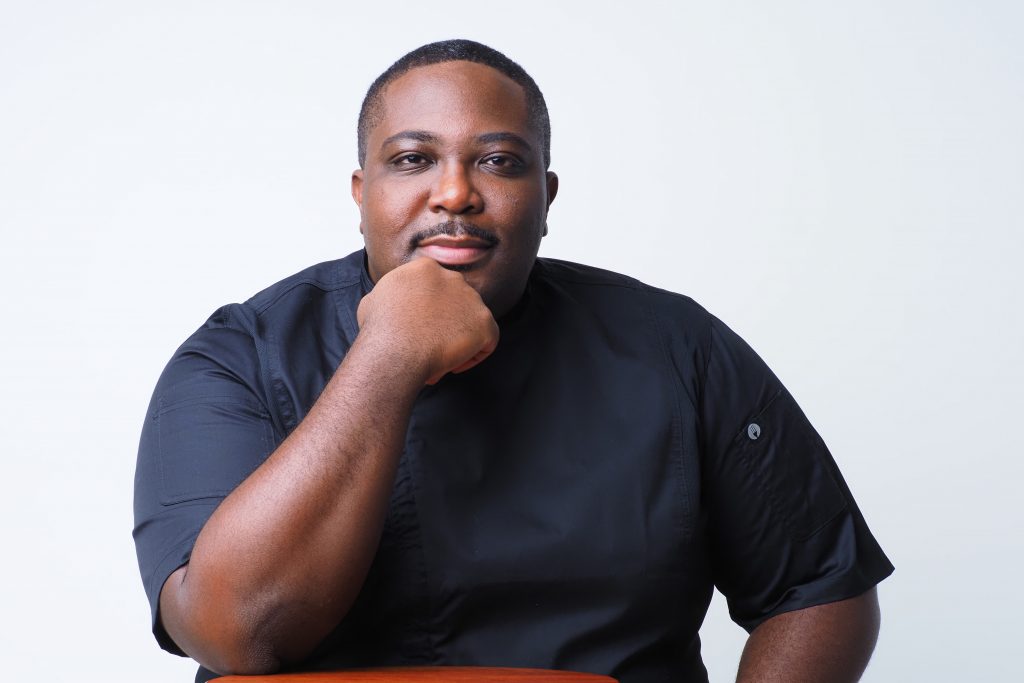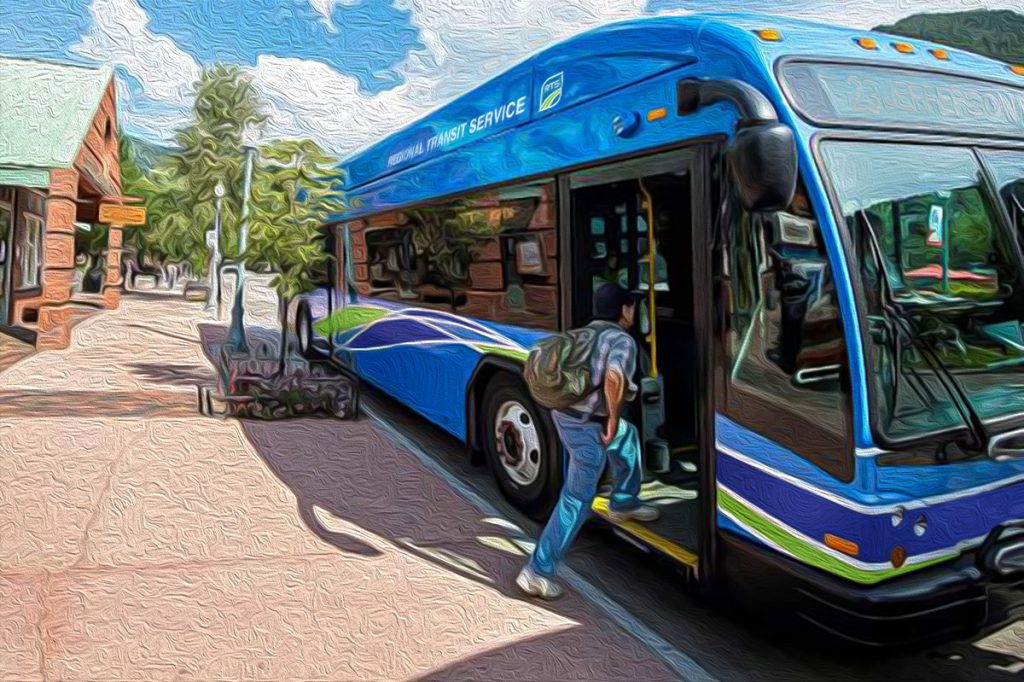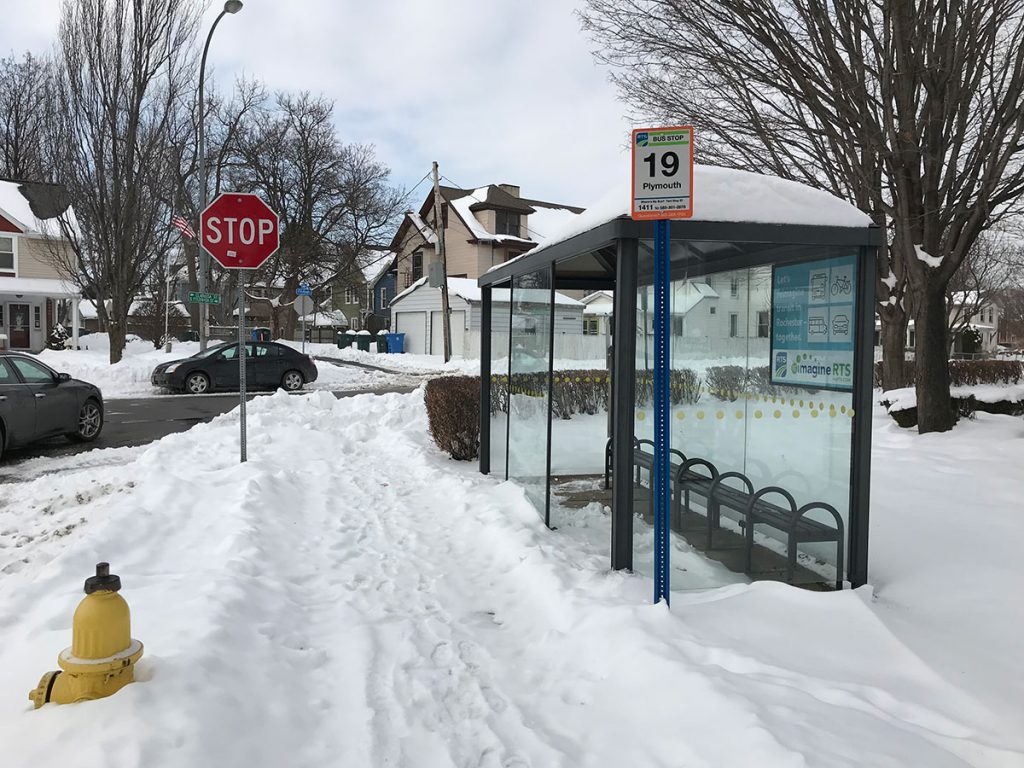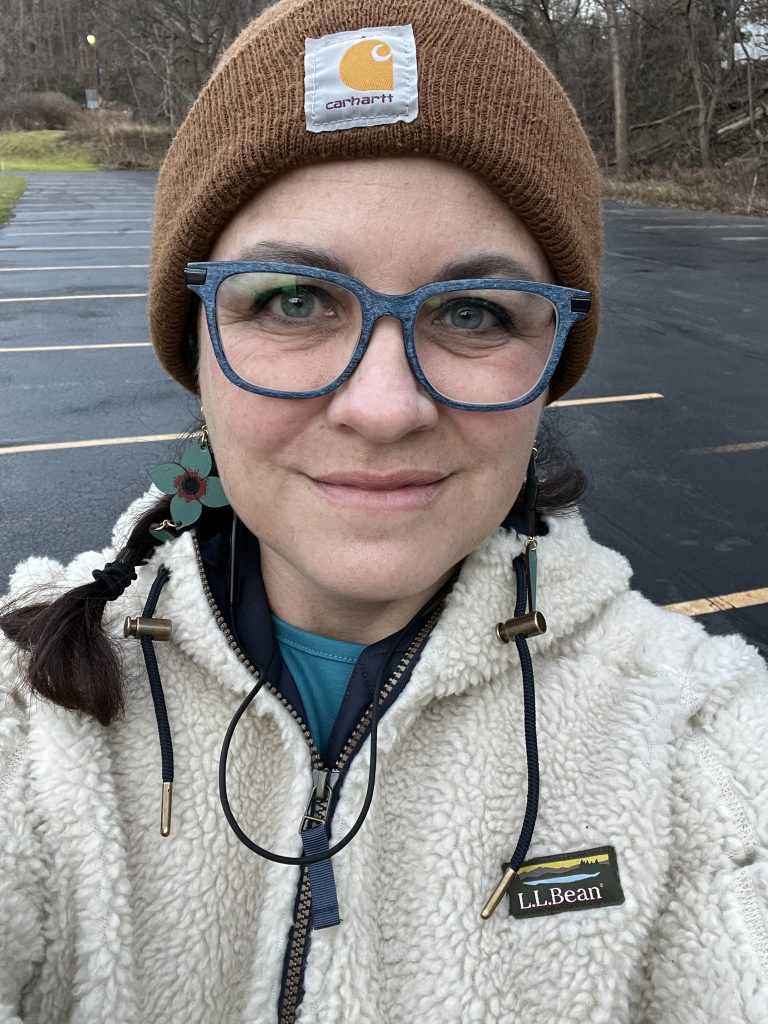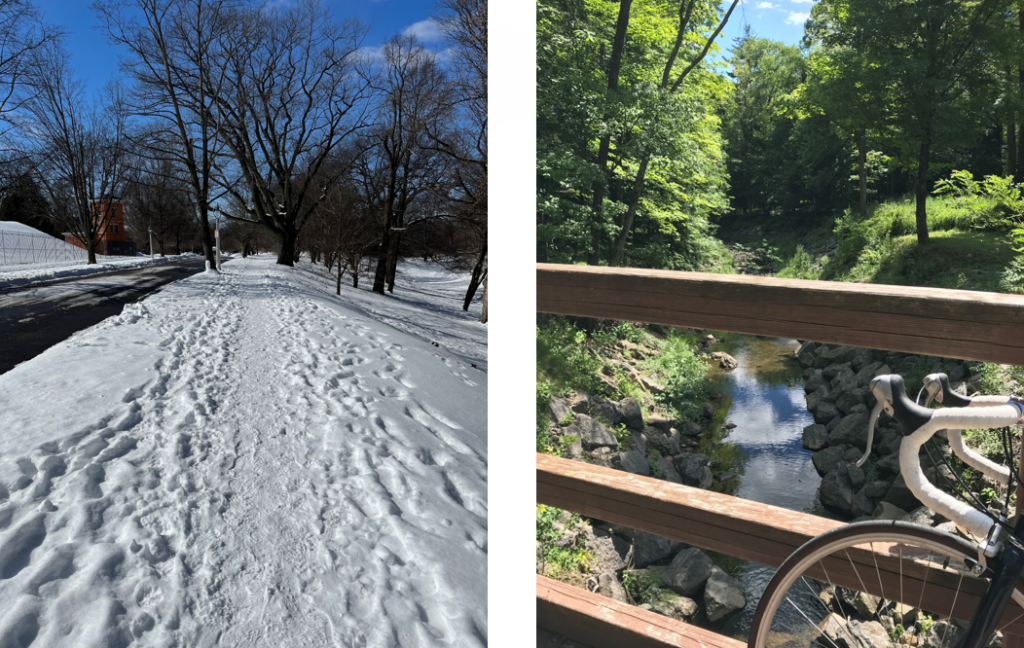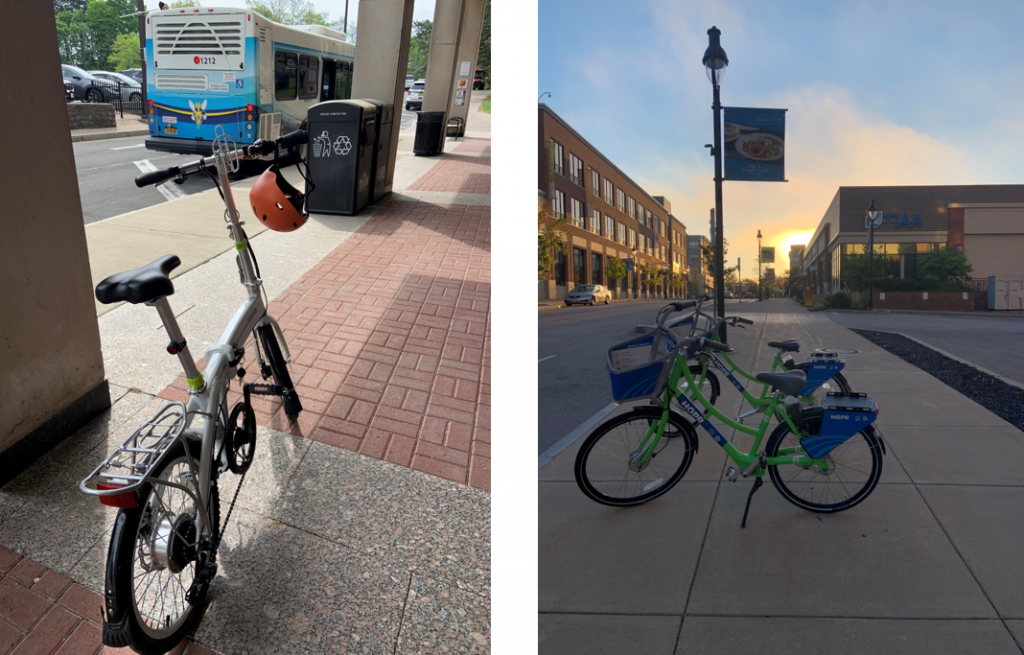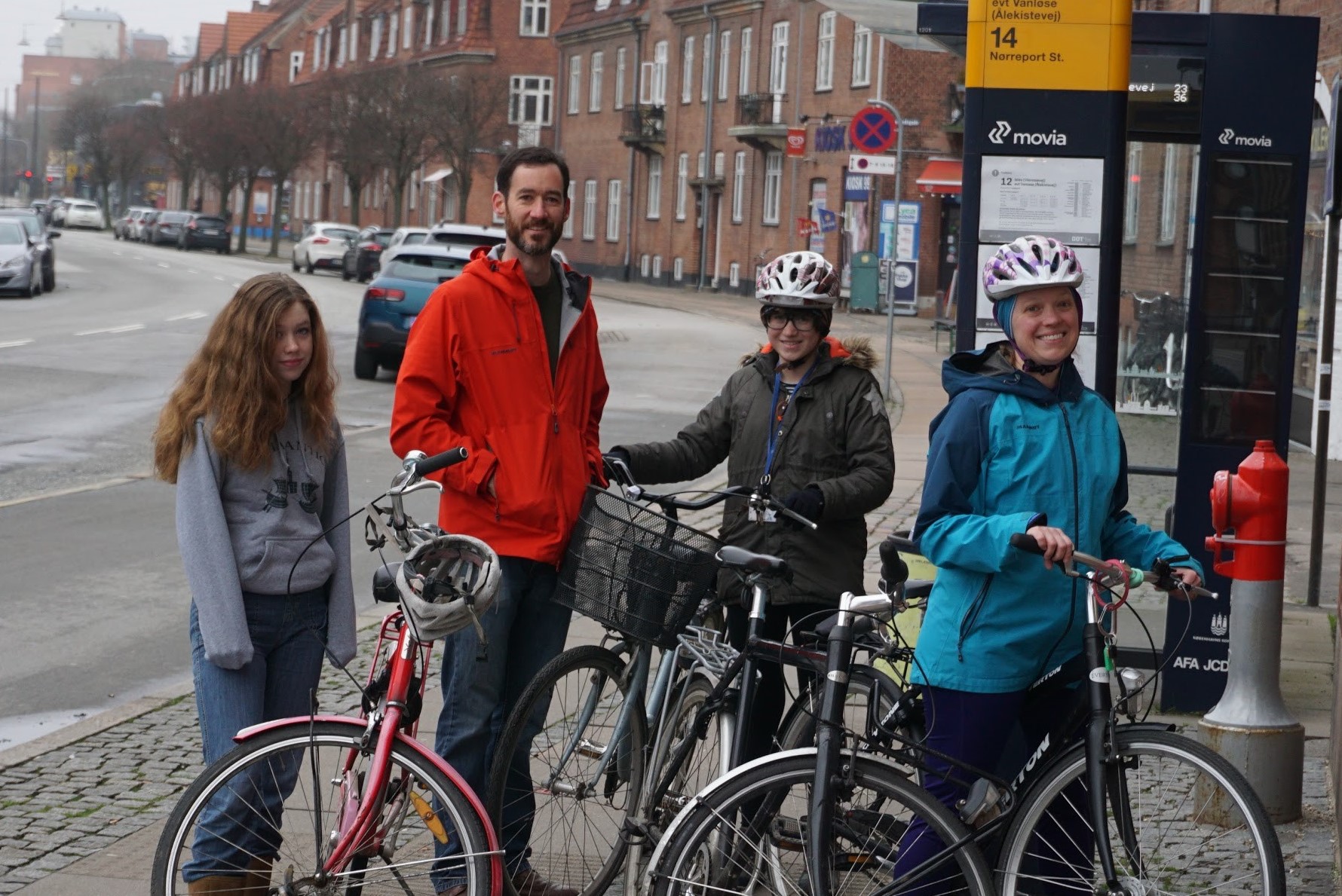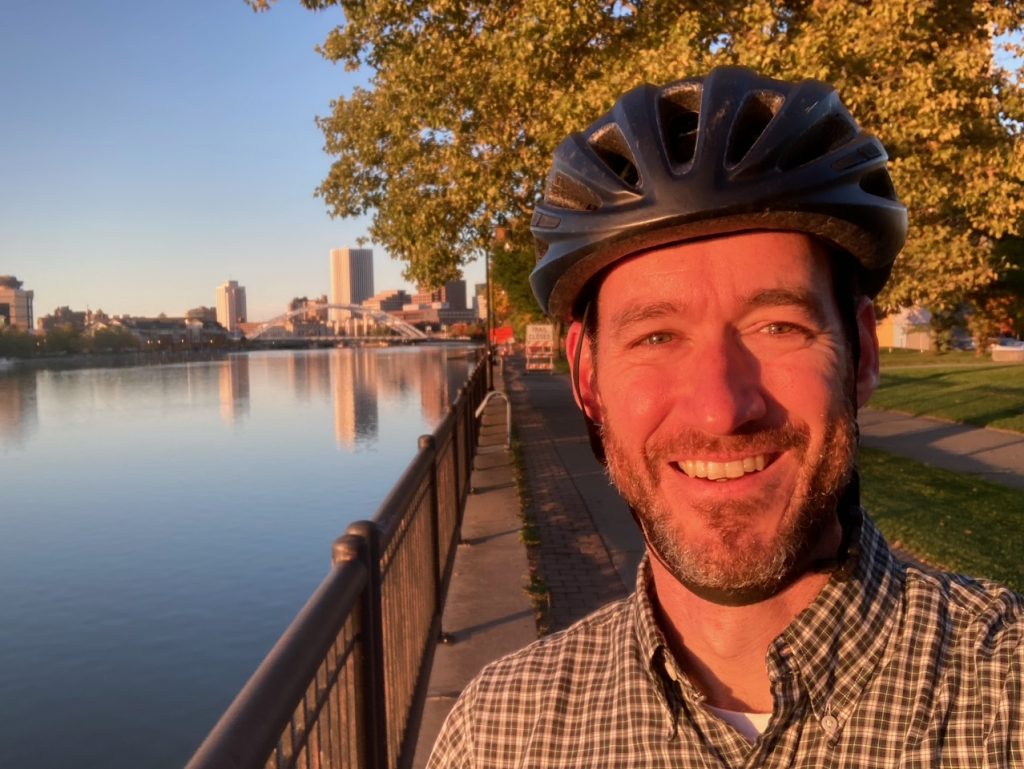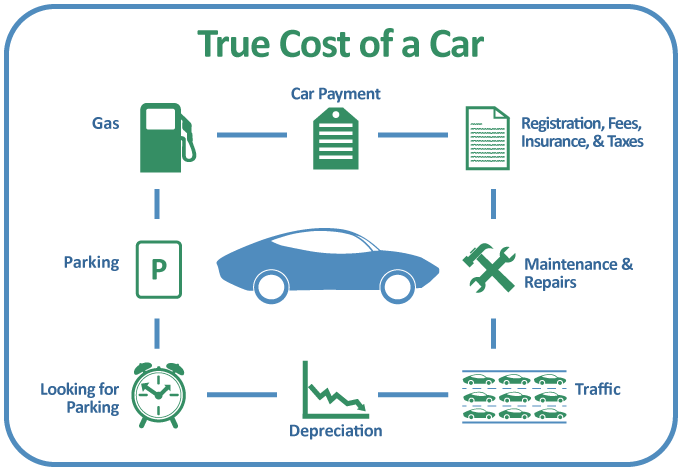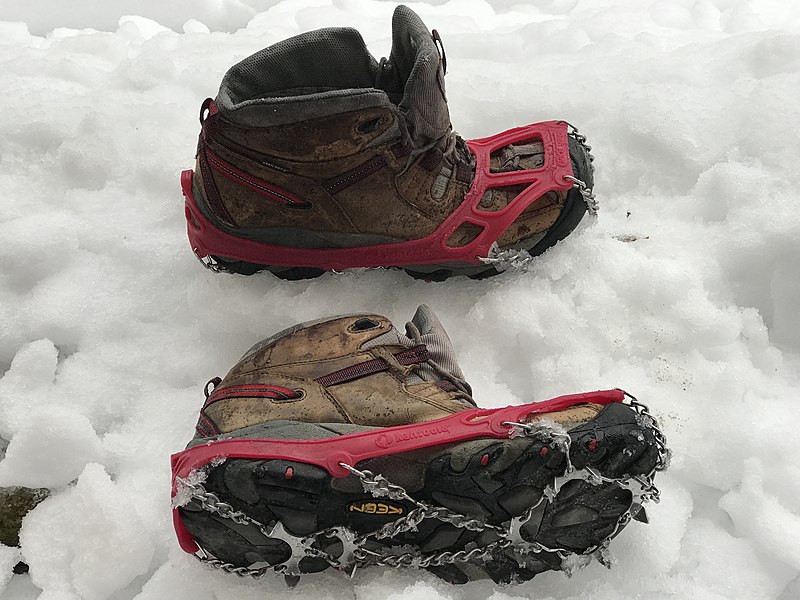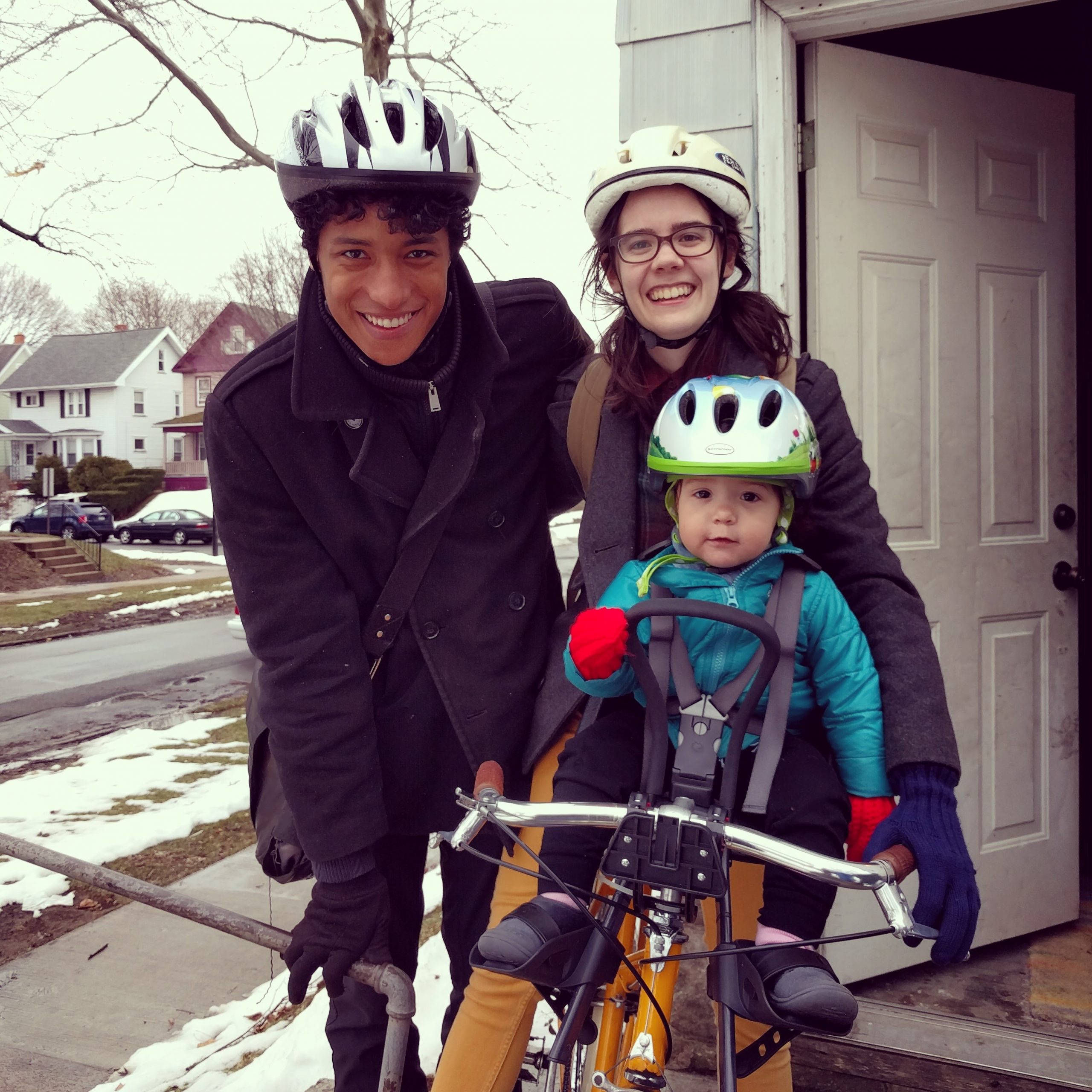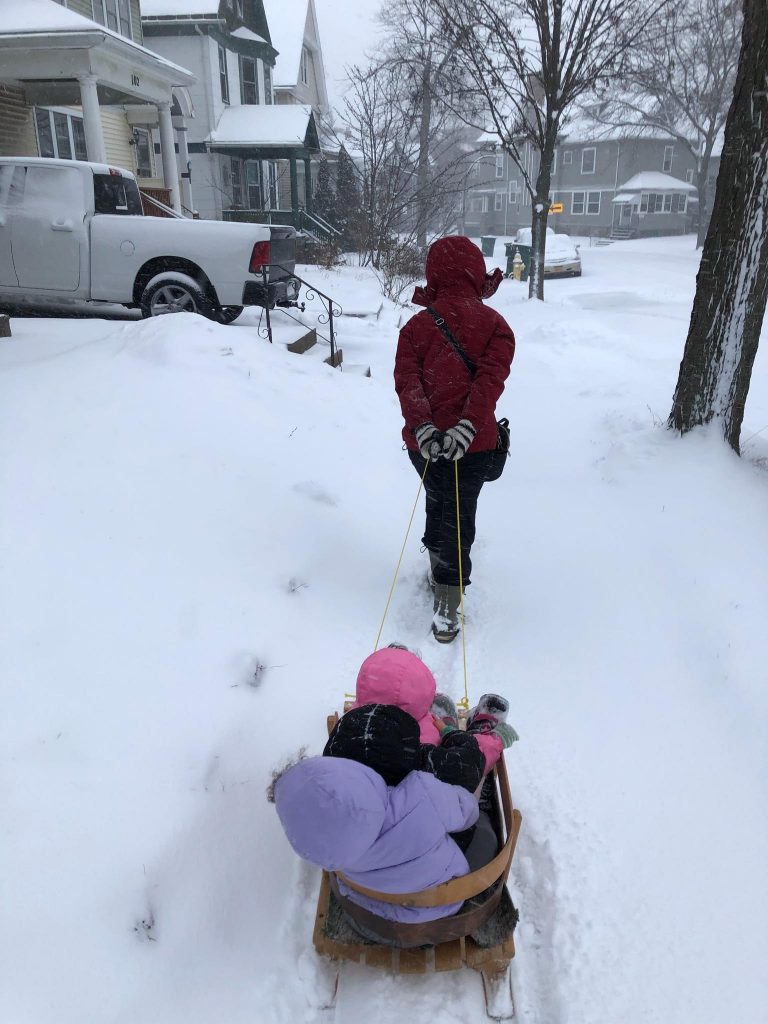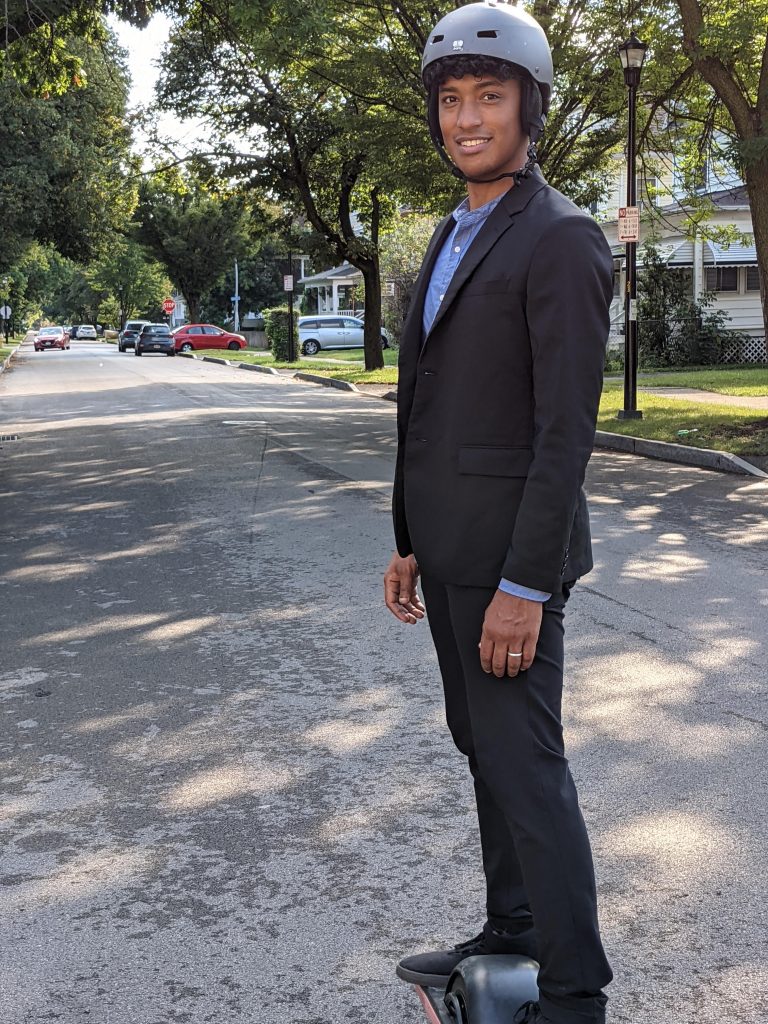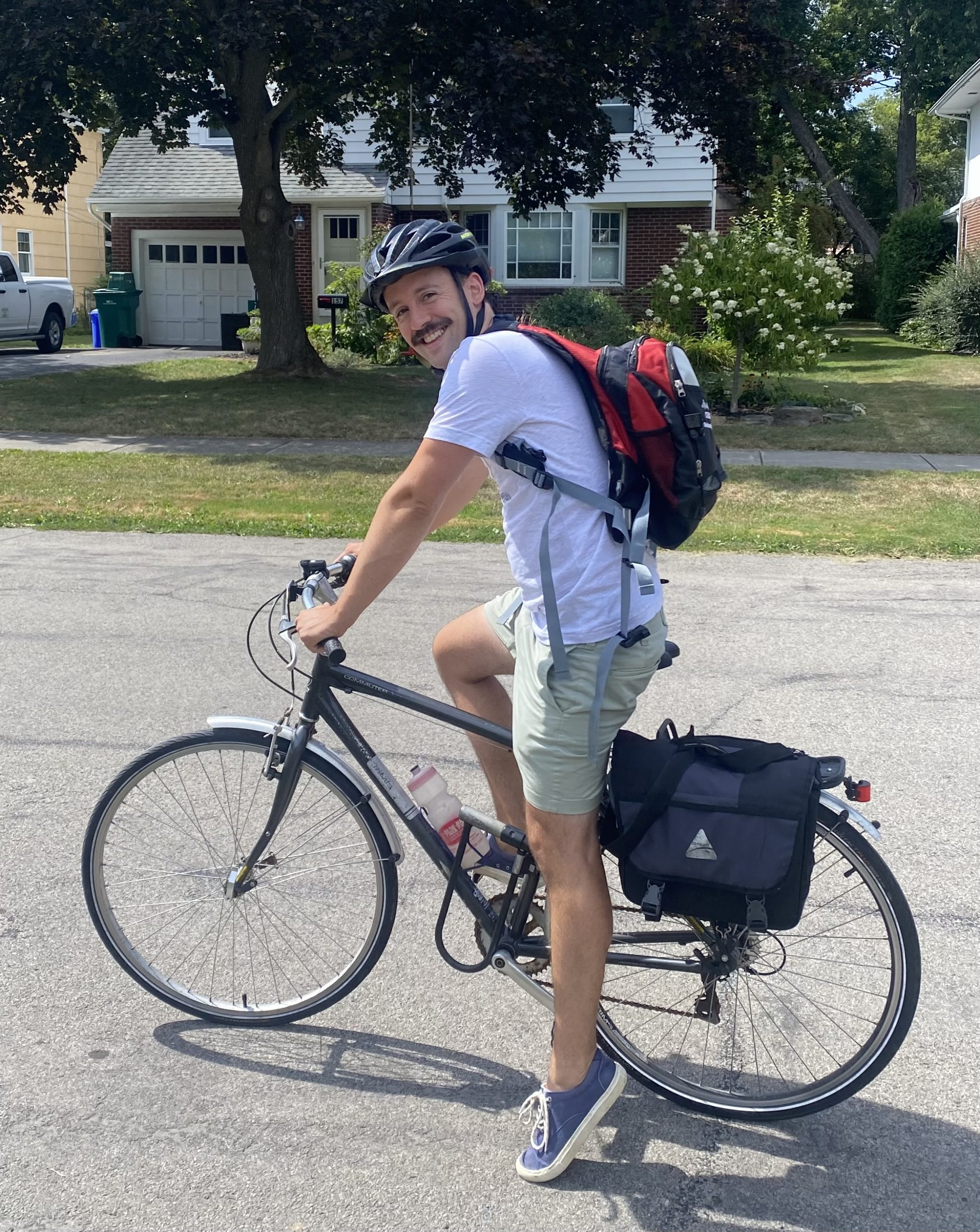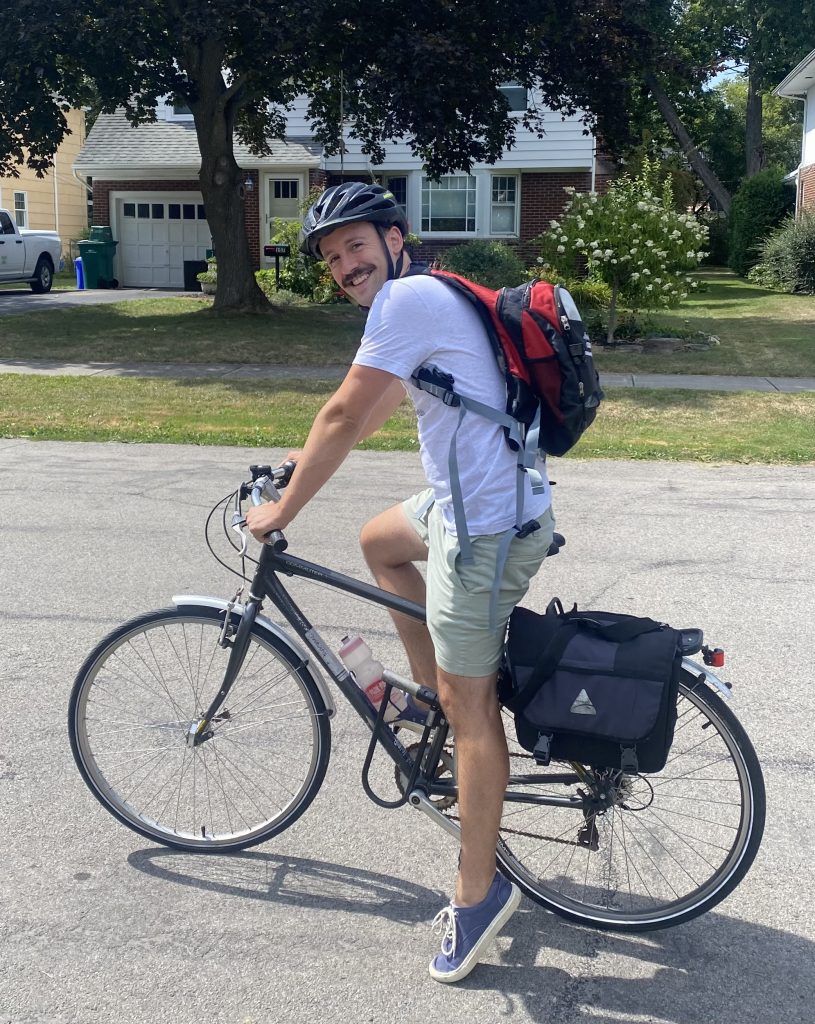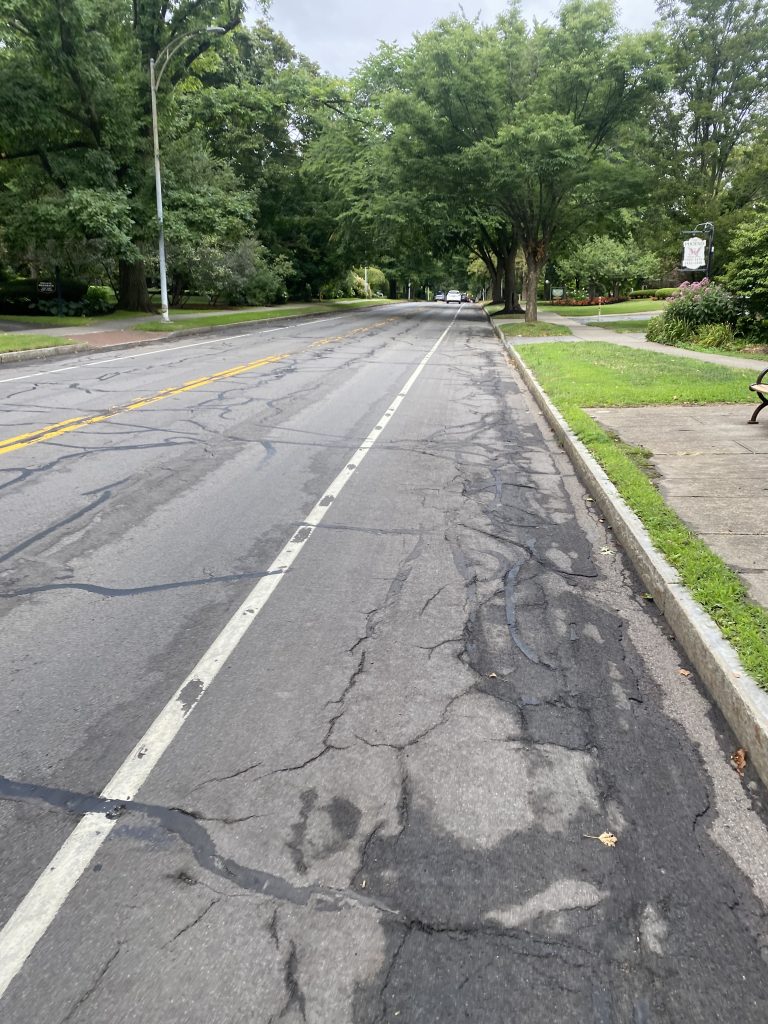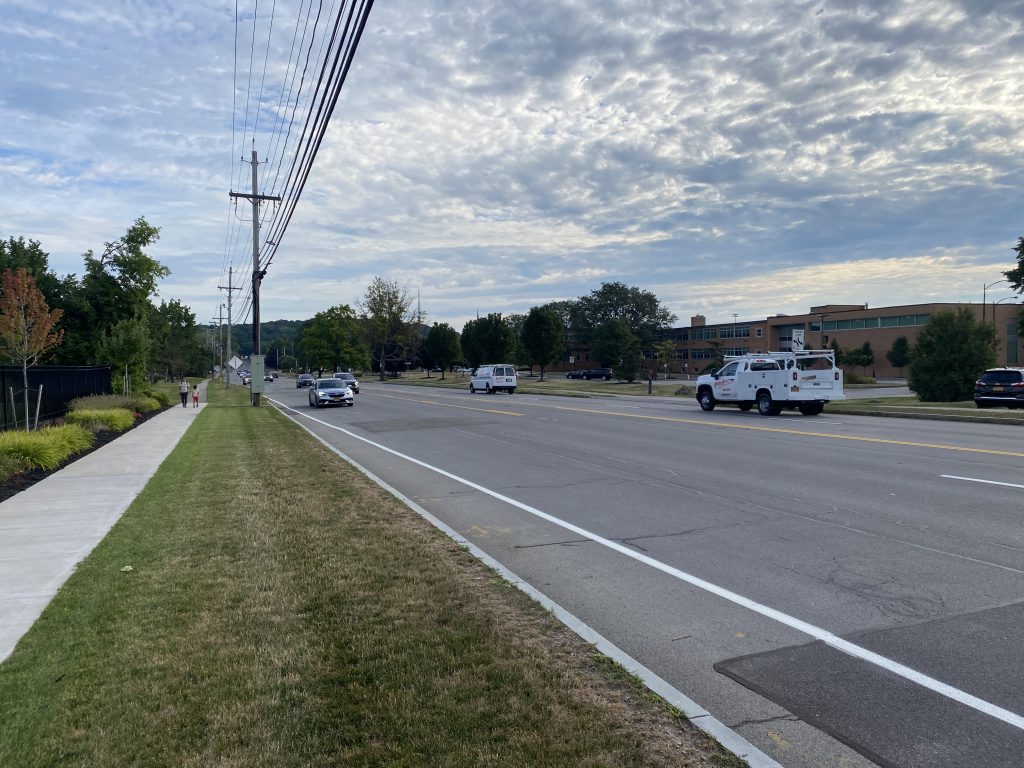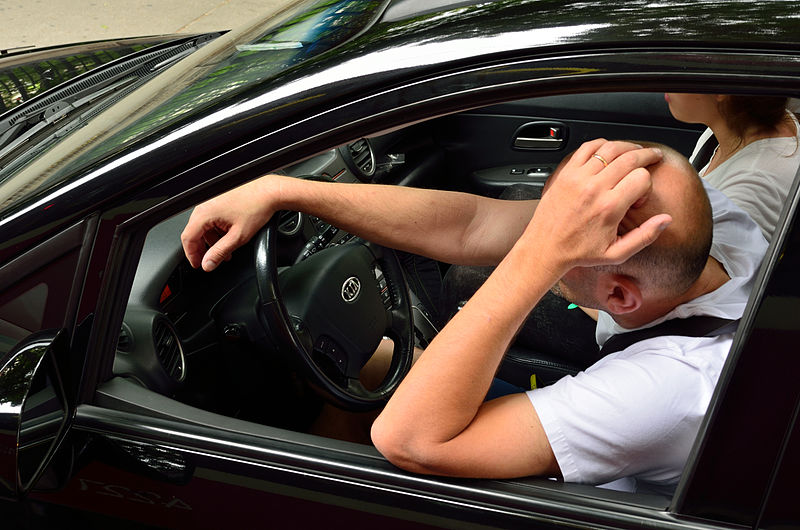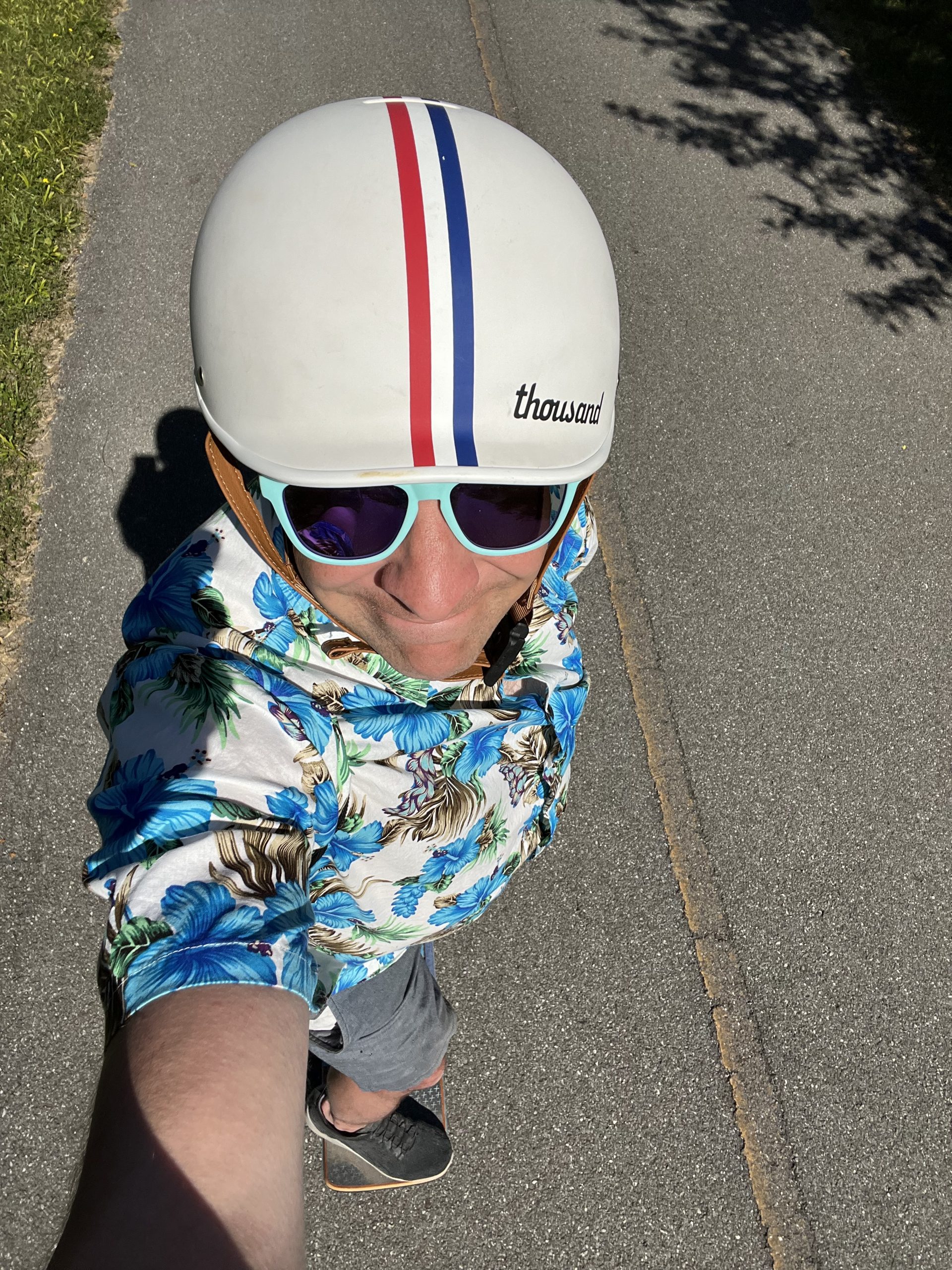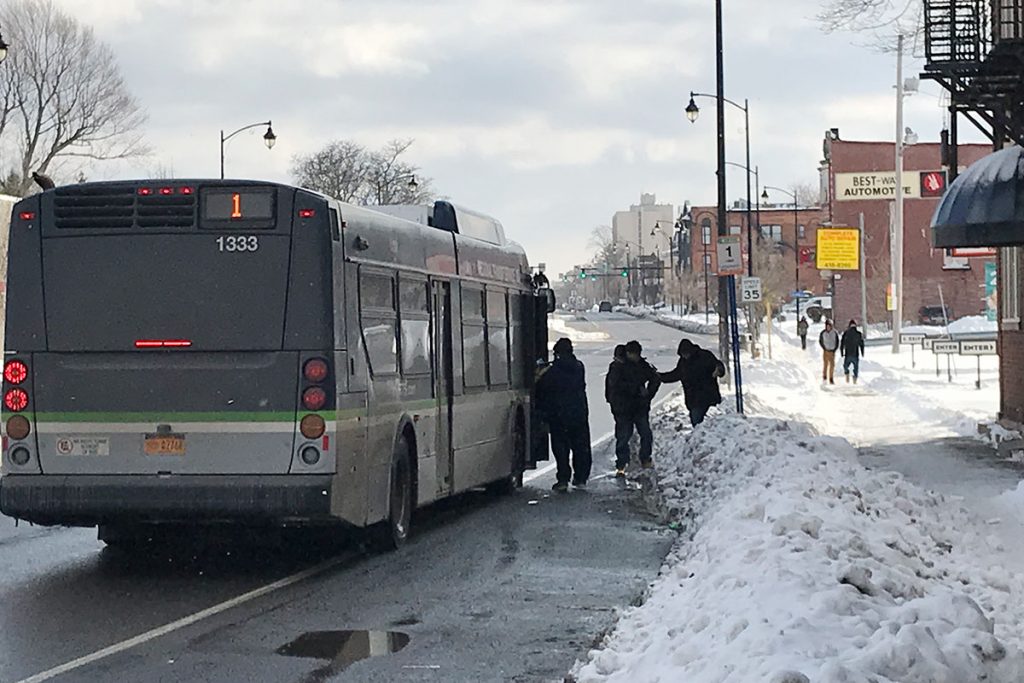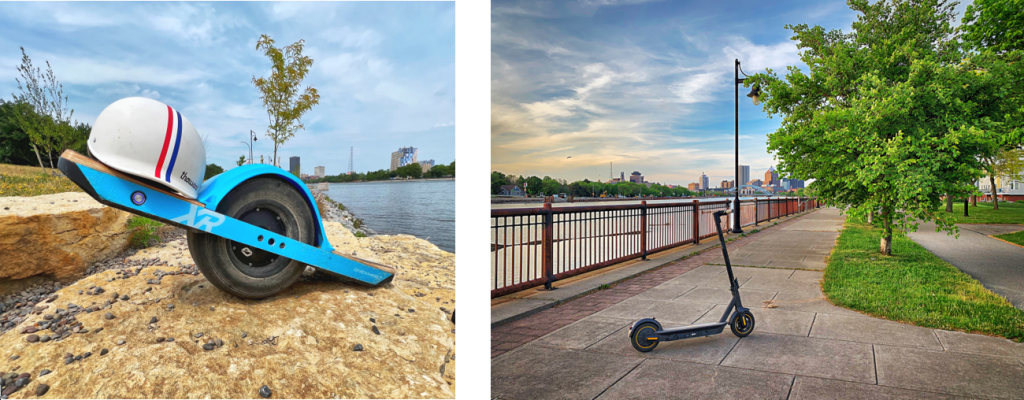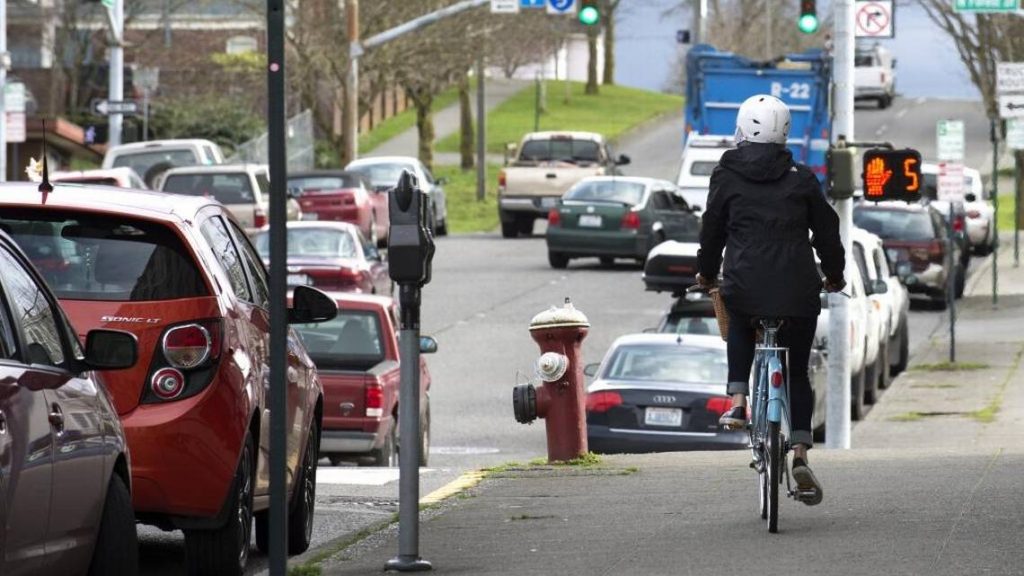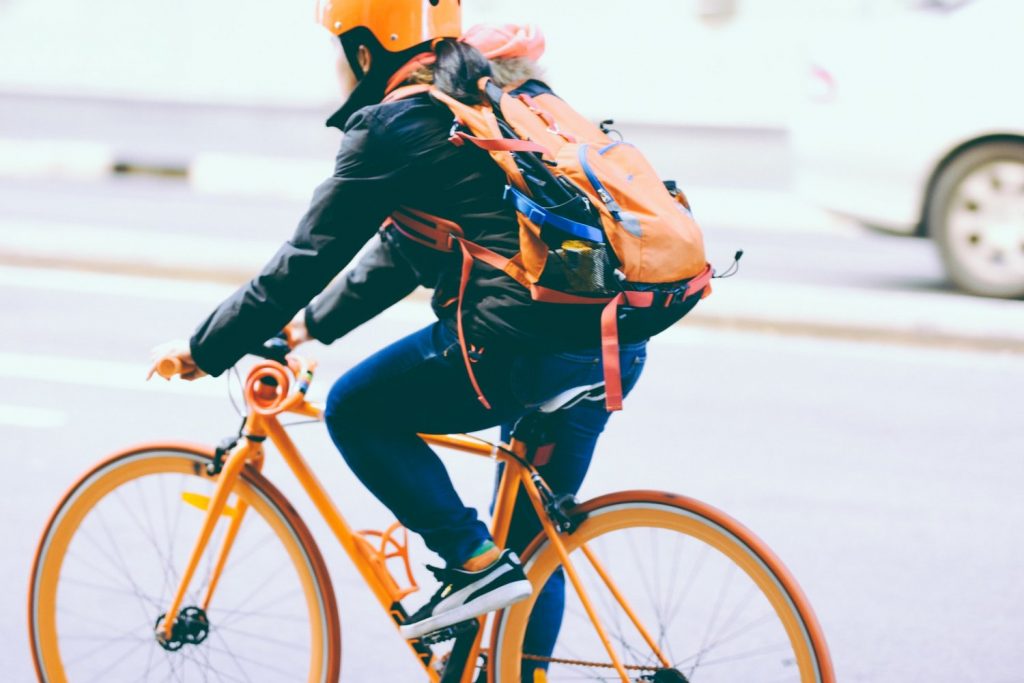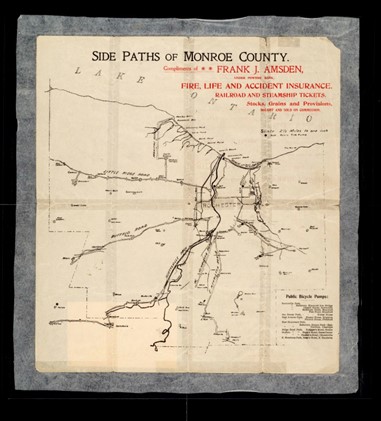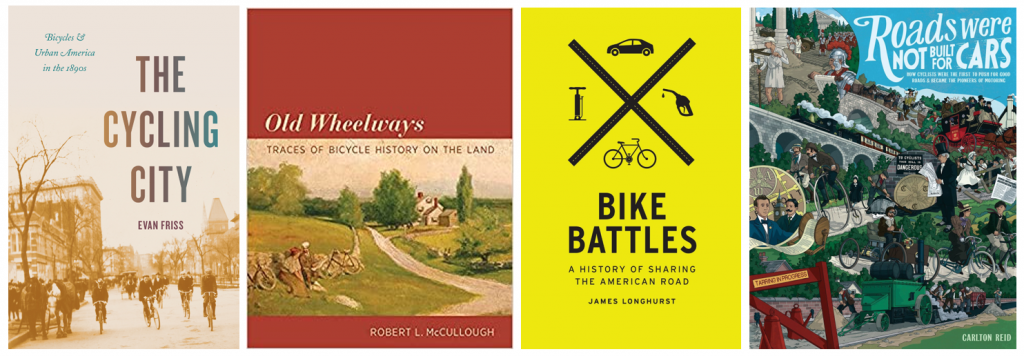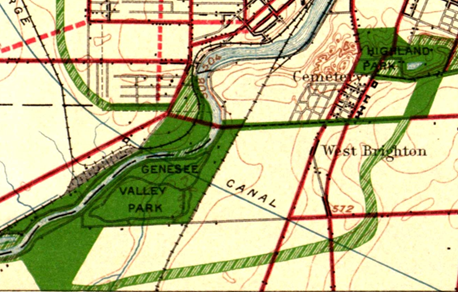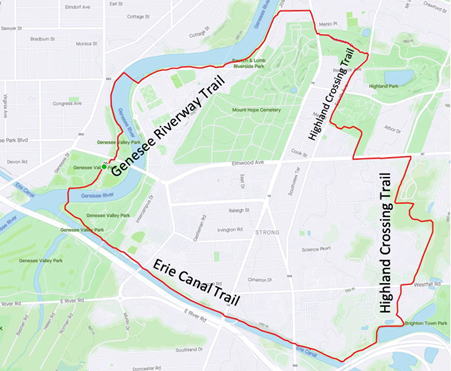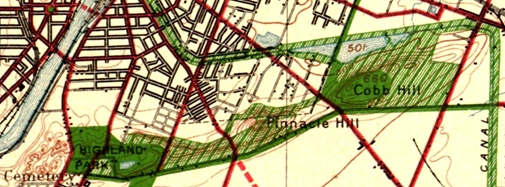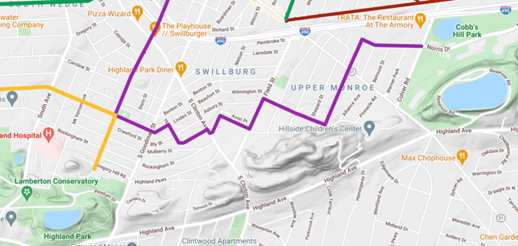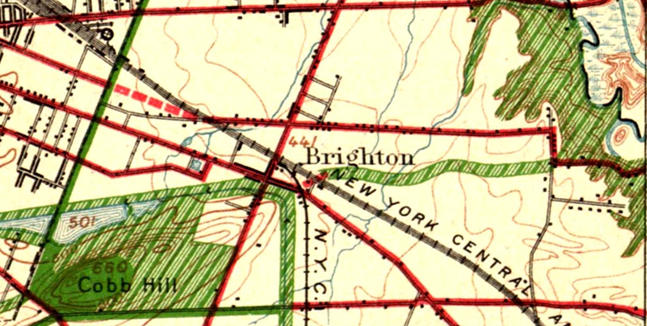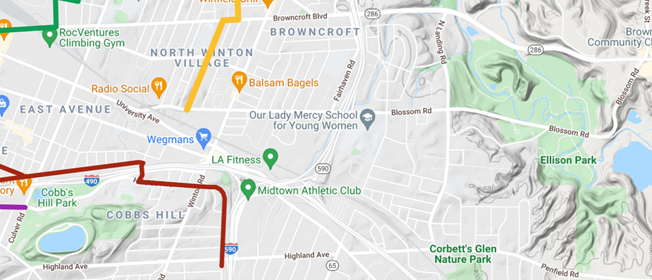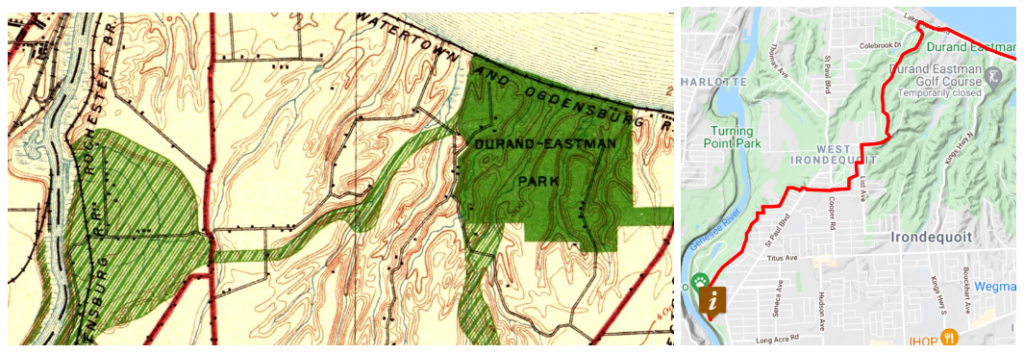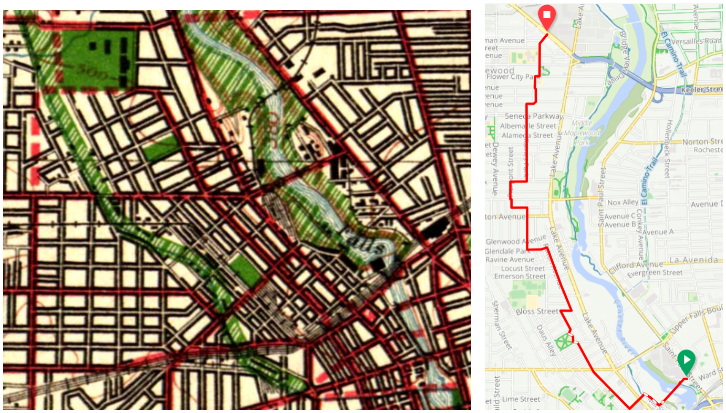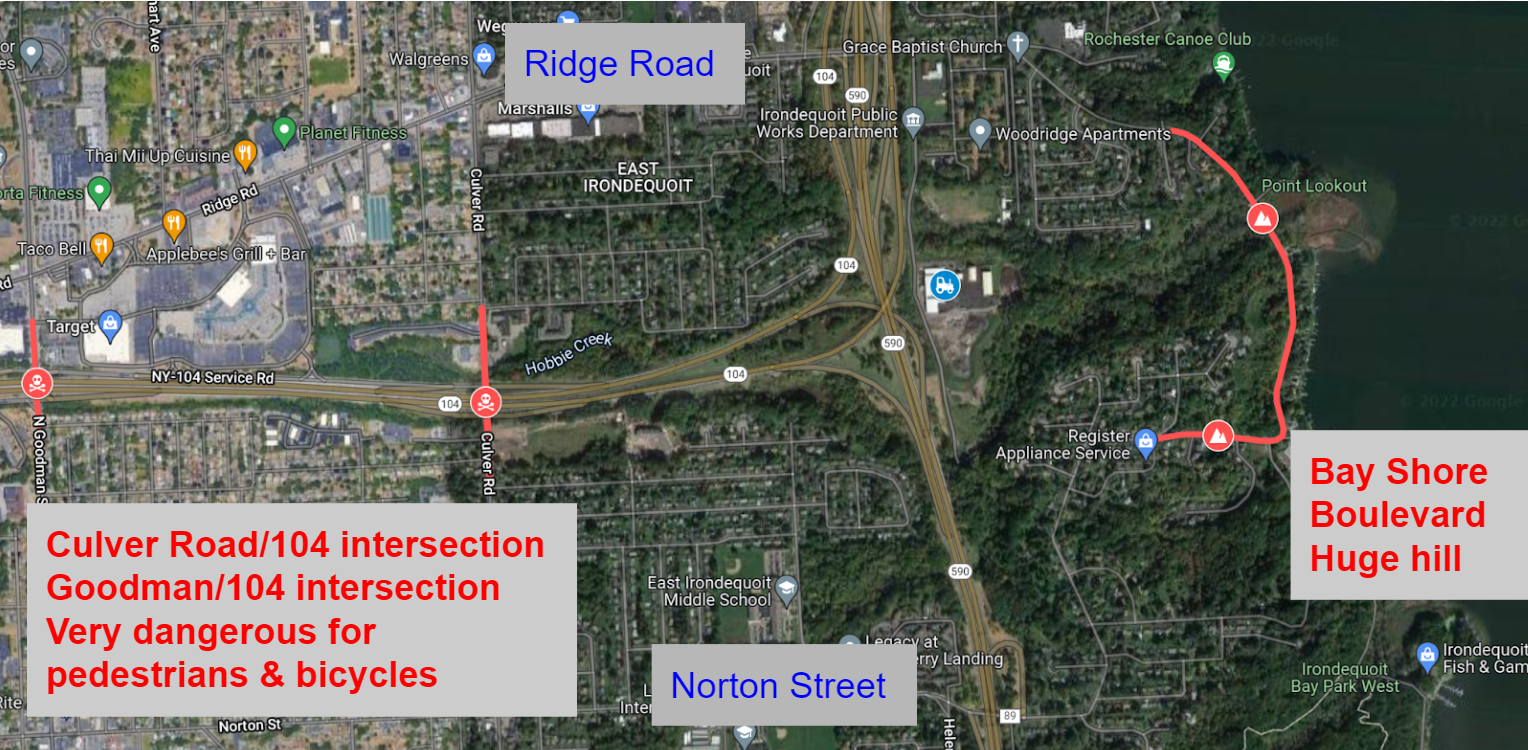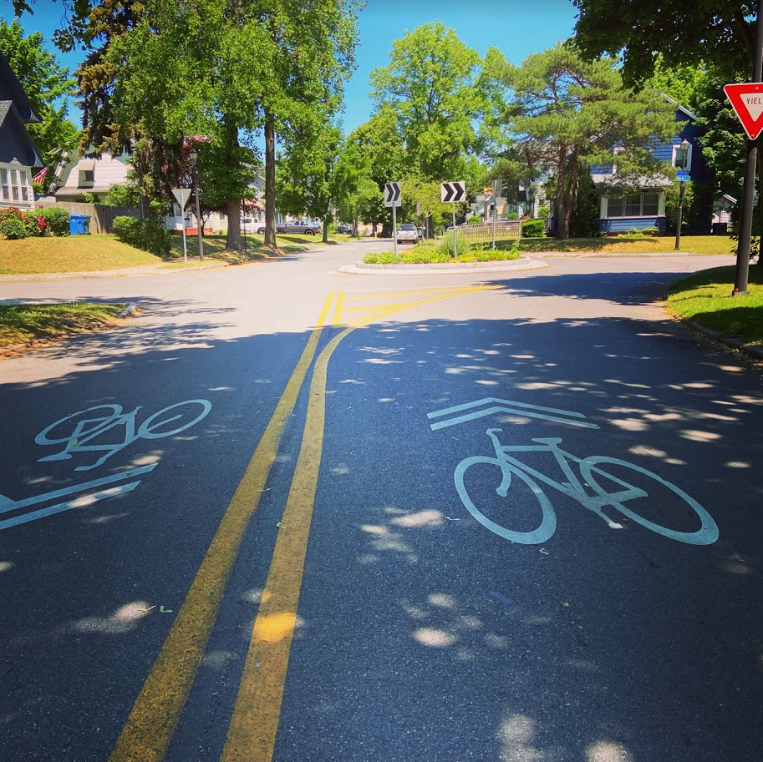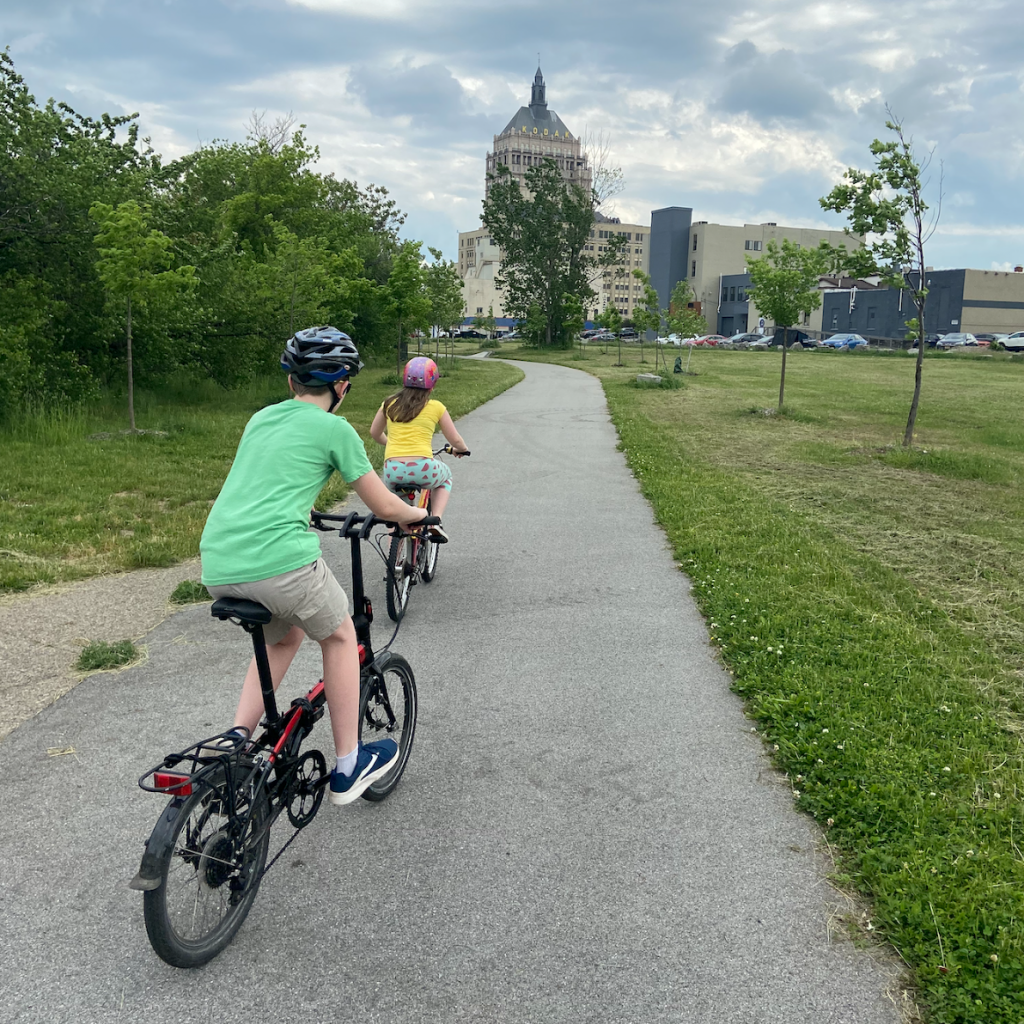By Jesse Peers, Cycling Manager at Reconnect Rochester
As Rochester cyclists know well, when bike lanes are installed here, they tend to be in isolated stretches, and disconnected from each other. Hopefully that will change as a result of the Active Transportation Plan and its envisioned Bike Spine Network. Today, though, Reconnect Rochester wants to highlight a component of the City’s bike network that isn’t disjointed and is quite well executed: the growing Bike Boulevard network.
Bike Boulevards are residential streets through neighborhoods that parallel primary, busy roads (aka, “arterials”). They are traffic-calmed, particularly by speed bumps, and wayfinding signage is installed for cyclists. Though not all bike riders will be comfortable riding along bike boulevards, most people find them manageable, even pleasant to bike along.
For those who haven’t heard my funny Garson story, I’ll repeat it here. In 2021, Garson Avenue through Beechwood and North Winton Village was made into a Bike Boulevard. One day I overheard some neighbors complaining about the changes and the speed bumps in particular: They exclaimed in anger, “We don’t even drive on Garson anymore!” I had to keep myself from laughing: That’s the point, of course – bike boulevards are supposed to slow down and even deter – car traffic. The speed bumps are doing their job.
In 2015, Alta Planning put a lot of good thought into where Bike Boulevards could be installed. As you bike around, try these purple dotted lines!
Rochester’s Bike Boulevards Plan was created in 2015 and the first boulevard along Harvard Street opened in May 2016.
The first Bike Boulevard along Harvard was celebrated with a ribbon cutting
Phase 1 (2016)
Phases 1 and 2 (2021)
2021 was the year that the Bike Boulevard Network got a significant boost with the installation of phase 2. The City is currently seeking CMAQ funds for the construction of phase 3. Since the Bike Boulevards are centrally planned with an eye towards connectivity, they’re linking to each other when installed. (These maps don’t show the trails they connect to; that’s in part why we created the ROC Easy Bike map.) A vocal minority in a public meeting don’t get to say “no thanks” the way opponents sometimes overturn bike infrastructure on arterials (creating gaps in the bike network).
Phase 3 in yellow
It’s important to note that the City of Rochester doesn’t view bike boulevards as substitutes for dedicated bike infrastructure on arterials. Rather they view the two types of infrastructure as complementary to each other. After all, destinations like workplaces, stores, daycares and such tend to be on arterials. The Active Transportation Plan encourages the City to take more care at bike boulevard crossings and this must be a priority. The Bike Boulevard along Harvard Street for instance is great, but jeesh – have you ever tried to cross Goodman there? Especially with a kid tagging along, it’s tough.
Unfortunately, we’ve been waiting for three years now on the wayfinding signage for the phase 2 boulevards. The pandemic wreaked havoc on the supply chain and Monroe County DOT, which is responsible for installing signage, is short staffed and hasn’t yet had the time to put them in at the time of this blog. Coupled with the fact that the City has not done a press release or ribbon cutting, it’s no wonder why the Bike Boulevards are the low-stress bike network and investment/accomplishment no one knows about.
It’ll be quite some time before phase 3 of the boulevards is complete. My take: Bike along those future bike boulevards anyway! That’s what we do on our Flower City Feeling Good bike ride series on Wednesdays: We amp up anticipation for and increase familiarity with that growing network. Phase 3 boulevards are not traffic calmed yet but they’re definitely bikeable and easier to bike along than arterials with no/disappearing bike lanes.
Here are more reasons why I love the bike boulevards and use them for most of my riding:
- With less and slower car traffic, there’s less car exhaust to breathe in. Studies confirm this.
- Since residential streets are narrower than arterials, there’s typically more tree shade, sometimes even “kissing canopies.” Thus in the summer, it’s easier to stay cool.
- Since the streets are calmer, I take advantage of that by listening to podcasts or music as I ride.
- Kids along these streets have safer playing conditions, so there’s more joy in the air; more people on their porches saying hi too.
Granted, navigating the area largely by bike boulevards isn’t as direct. Each ride can be a little squiggly. But I’ve ridden along the existing and future bike boulevards so much the last few years that I know where the turns are without consulting a map or signage. And these minute turns are literally a few seconds on a bike, so you’re not wasting much time “being squiggly,” especially if you’ve got an e-bike or e-scooter. For all these reasons, it’s worth it. My kids and I use the Bike Boulevards a lot – especially when getting to Innovative Field for a Red Wings game.
Some quick notes to end on:
- The USDOT estimates “that for an alternative low-stress route to be viable, the increase in trip length should be less than 30%.” My hunch is that most Rochester trips along the bike boulevards will be within that 30% threshold.
- As a bike rider’s know-how and confidence grows, they can stray outside the lines on our ROC Easy Bike map. Want to increase your know-how and confidence? Take one of our on-bike classes sometime!
- Bike Boulevards aren’t just a City investment! Brighton and Irondequoit are investing in bike boulevard networks too.
- To be a great biking city, our bike network and investment can’t be hidden from view (mostly along overlooked back ways). The bike network must be obvious and intuitive to grow ridership. There’s more work to be done and the Bike Spine Network of protected bike lanes must be built.
- As you can see on the following map from the City’s ATP, pretty much all of Rochester’s residential streets are low-stress to bike along. So don’t feel like you have to stick strictly to the official Bike Boulevards. Just take care when crossing those major roads in red.
Bike Boulevard roundabout at Pershing Drive & Rocket Street in the Homestead Heights neighborhood



